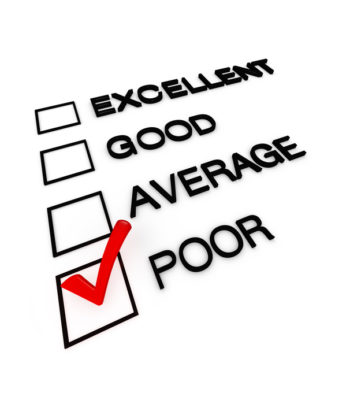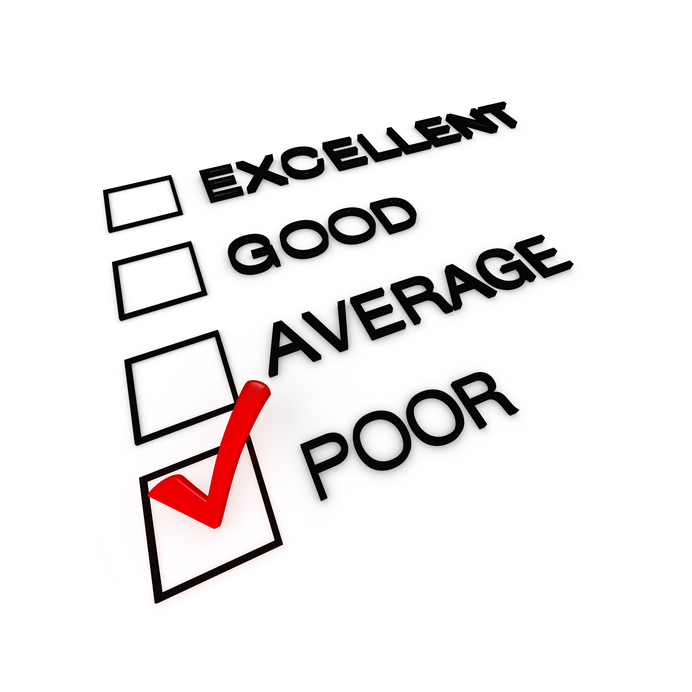Insights
Is Price Conflict Disrupting Your Strategic Account Relationships?
Insights

Is Price Conflict Disrupting Your Strategic Account Relationships?
Imagine that your company has put in place a bold new plan for growth. The plan involves opening a new channel to market–selling through big box retailers. This new channel has the potential to allow the company to access new customers and significantly boost revenue. Everyone in your organization is excited, but guess who’s not excited? The strategic accounts that you manage, the national and regional dealers who have been your core channel to market for decades. In fact, they are extremely unhappy with you. The prices that the big box retailers are offering in the marketplace are significantly below what the dealers are presenting. After a few weeks of the new channel launch, your strategic accounts have flooded your voicemail and inbox demanding price concessions.
This is an example of price conflict. Price conflict is a significant misalignment of pricing or pricing expectations in the marketplace. It goes beyond the common pricing challenges that occur when competitors in the market make price adjustments, either up or down, or from the constant pressure by customers on suppliers to reduce price. Price conflict emerges when there’s a fundamental change in how the market operates, and therefore, in pricing dynamics. These situations can be very disruptive to strategic account relationships.
Later in this article we will discuss how to mitigate or resolve price conflict, such as the conflict that emerged in the example, and, in particular, how to do so without having to resort to making price concessions. But first, it’s important to understand when price conflict is likely to occur so that strategic account managers, and their colleagues, can recognize the signs and prepare accordingly.
Velocity®
Vol. 20, Issue 1, 2018
© 2018 Strategic Account Management Association, Inc.
Request this Article
[related-case-study]
China’s Future Competitive Environment
Insights

China’s Future Competitive Environment
‘No Time for Losers’—Is Samsung a precedent?
Note: This article is part three of a three part series. The first article is “We Aren’t The Champions: Achieving Success As A Second Mouse.” The second article is “The Future Market For Second Mouse Companies.”
In the first two parts to this article, we wrote about how a number of highly-successful Chinese companies have achieved their results not by emulating the Early Bird that catches the worm, but rather by emulating the Second Mouse that gets the cheese. In our review of these Chinese Second Mouse companies, we concluded that they were not merely viable from an economic perspective, but were in fact prospering. Borrowing from the song made popular by Queen, we concluded that while these firms “Aren’t the Champions” from the traditional perspective of leadership in design, technology and features, they could in fact be quite proud of their accomplishments as Second Mouse companies.
In the second part of the article, we examined whether future market evolution, rather than economic woes, might force them to abandon the Second Mouse business model and begin to evolve to be more like their western competitors. Our conclusion was that while there were some segments across global markets where the Second Mouse companies were unlikely to achieve much success, there were far more segments in which their offer of “almost as good products at a very attractive price” would continue to hold great appeal — and that such segments were as plentiful in the developed country markets of the west as in the emerging country markets of Asia, Latin America, and Africa.
The implications of these findings are significant for today’s market leaders from the west, with their traditional emphasis on leadership in technology, design, and features. In this final part to the article, we will examine whether these competencies can result in sustained success, and then consider whether today’s Second Mouse companies will in fact change their own priorities to compete with western firms along these very same dimensions.
“We’ll keep on fighting — till the end” — Can the Early Birds stay ahead of the Second Mice?
One of the most common responses to our Second Mouse articles is that the global leaders lose out to the Second Mouse companies only if they falter in their innovation and allow the competitors to catch up. We have to confess that that was our knee-jerk reaction to Chinese competition for years as well. We figured that out-innovating the market newcomers who were unfamiliar with global customers would be a fairly low hurdle for companies that were paying attention.
What we hadn’t appreciated was the range of situations in which “nearly as good, at a much lower price” is actually a preferred solution to the customers. A set of unconventional competitors from China will naturally focus on product simplification, on a reduced set of features and capabilities, and on significantly lower costs, both of products and of using them. The resulting offerings don’t answer every need, but they do the job for most customers, at a significantly lower price point. And for some segments, they are exactly what the customers want.
Innovating your way to success is a good strategy if the market that will reward leading-edge product offerings is large enough. But once a market leader finds itself faced with competition that it considers second rate, but offering superior value to the customers, continuing to pour resources into cutting-edge product development is a losing proposition. It violates the old maxim that “When you are in a hole, stop digging.”
That leads us to our recently-discussed mandate to take on the capabilities of the Second Mouse competitors, quite a different prescription from stepping up R&D. It is a much harder message than “stepping up your game” but we are convinced it is the right answer.
In summary, we believe the most highly skilled Second Mouse companies are economically viable, will find significant markets that reward their business models, and are difficult to beat in the marketplace with age-old Early Bird solutions from the market leaders.
The remaining question about the Chinese companies’ future is whether they will be content to be Second Mice, or will find the lure of offering cutting edge products too great to resist. One of our first revelations about Chinese companies came from understanding that they are proud to be fast-followers. They consider it to be a triumph to copy the best. But, there is ample precedent for believing that at least some of them will aspire to more.
“No Time for Losers” — Is Samsung a precedent?
In an earlier era, Korea was the textbook example of a nation of fast followers and Samsung was the fastest and smartest Second Mouse, taking on Sony especially with products that approached those of its rival in performance, but at a significantly lower price.
By 2005, Samsung passed Sony in total sales. But something even more interesting happened as Samsung ranked ahead of Sony in Business Week’s “The Top 100 Most Innovative Companies Ranking.”
In 2011, Samsung has introduced an inspirational television commercial for its new line of phones that gives insights into its corporate mission:
“Nobody ever set their sights on second place. Who aspires to be almost remembered? There is a reason there are no giant foam figures that say we’re number three. No one wants to tell an average joke, make an underwhelming entrance, go out with a whimper. No one ever stood in front of the mirror with a hair brush pretending to be the tambourine player. And there are definitely more kids dressed as Batman than Robin.
We all aspire. So when we built the new Samsung Galaxy S II we built it to be the best and brightest with the most vivid screen out there on our fastest phone ever. Because we’re Samsung and that’s just the way we’re wired.”
Samsung is clearly stating that it rejects the Second Mouse model, in favor of the Early Bird. It has already been ranked #1 in a number of products, such as televisions and computer displays. It is challenging itself now to take on and win over Apple in smartphones. Visiting the Samsung campus is a jaw-dropping experience, observing some of the world’s most focused workers and leading-edge research.
So, is Samsung’s rapid evolution to leading innovation the natural and perhaps only path? With other examples, like the Japanese auto makers, it does seem normal for companies to want to be leaders in technology and quality, not simply cost. And the Chinese government has written into its 5-Year-Plans the intention to become leaders in technology, not just low-cost manufacturing.
Indeed, the position of the Second Mouse seems precarious; we do not have decades of experience watching Chinese companies to see if there is a sustainable competitive advantage in Second Mouse skills, or whether the giants will lose their edge. After all, there are large numbers of Chinese companies with the skills and desire to up the stakes in speed and cost savings, while the number of companies which can take on a Samsung in product innovation is small. But first-mover advantages would seem to loom large, given economies of scale and the size of the middle market in China. Yet, as labor costs rise in China, there will be other fast followers in the game as well.
What that means is while a particular competitor might either graduate like Samsung or fall to third place in its pursuit of low cost, there will not be a dearth of others waiting in the “mouse line” to take on the market. Returning to our example of Samsung and its graduation into the Early Bird ranks, we note that a U.S. firm, Vizio, has filled the Second Mouse void in the television industry. Just as China’s population brings millions of new individuals into the middle market each year, the population of Chinese companies pretty much guarantees an unending roster of Second Mouse companies that will be more than delighted to be able to say “You brought me fame and fortune and everything that goes with it.”
Summary:
So, we end our story with the answer that competing with Second Mice is not a challenge that will vanish soon. Whether or not they are proud that they are not the champions of anything but producing “nearly as good, at a much lower price,” there will be someone waiting in the wings to do the job. And if the current crop of Second Mouse companies grows even larger by combining their focus on cost with ever-growing sophistication, they will be formidable competitors indeed.
Authors: George F. Brown, Jr. and David G. Hartman
[related-case-study]
Growth Choices: Which Business Units Offer the Greatest Potential?
Insights

Growth Choices: Which Business Units Offer the Greatest Potential?
The lyrics to The Gambler focus on choices: “Know when to hold ’em, know when to fold ’em.” For most businesses, identifying the best choices is among the most critical contributions of their planning process. Which business units or market segments or innovation concepts offer the greatest potential for profitable growth, and therefore represent the best use of our scarce investment resources? Correctly answering that question can ensure that goals are realized and shareholders are rewarded.
It is always a challenge to accurately assess the growth potential that exists across a firm’s various business units and market segments. But it is a challenge that must be addressed, given the reality of scarce resources for investment and the need to spotlight the initiatives that on which management should focus its attention. Peter Drucker once observed “Whenever you see a successful business, someone once made a courageous decision.” Placing bets as to where growth can be realized will always require a bit of courage, but a systematic approach to assessing growth potential can yield insights that clarify choices and lessen the extent to which the leaders of the business feel that they are in fact gamblers.
A process for gaining such insights involves looking at factors that characterize the market environment in which a business unit operates and at other factors that characterize the strength of the position held by that business unit vis-à-vis its competitors. In the sections below, this process is outlined, including a high-level approach to assessment that can help to identify those business units or market segments that have the strongest potential to yield success.
Market Considerations
Three factors that reflect Market Considerations – Headroom, Market Growth, and Margin Improvement Opportunities – can be assessed across a firm’s business units or across the market segments in which it participates. In working with a variety of firms, there have been sharp differences across their business units and market segments along all of these dimensions.
The Headroom metric emphasizes the extent to which the market in which the firm participates offers sufficient room for growth. With respect to Headroom, the favorable end of the spectrum involves instances in which the existing business, defined in terms of both customers (and nearby prospects) and products, offers sufficient room for growth, while the less favorable end involves situations in which significant diversification or new business models are required.
Assessing the available headroom for growth must be done carefully. In all but a few exceptional circumstances in which a business owns a commanding market share, a first pass look will always say there is sufficient room for growth. But that look can be misleading. The more appropriate approach is suggested by an analogy drawn from the recent U.S. Presidential elections. Over and over, we heard about states that were “solid red” or “solid blue,” ones that were virtually certain to be in the camp of one candidate or the other. The same is true of markets and customers. An accurate assessment of headroom must look for the equivalent of “swing states,” those which could realistically be won by the business unit in question. In one application in the medical equipment market, while the business unit for which the assessment was done only had a modest market share, between situations involving long-term contracts and others involving “committed customers,” the available headroom in the coming year was only about a tenth of the overall market.
Market Growth is the second key factor to assess. It is always a major plus to be selling into growth, rather than having to battle to take share from existing suppliers. The most favorable indicator of solid growth potential is when market growth is at or above the growth rates goals of the business unit. Slightly less favorable, but still attractive, are those situations in which a unit’s growth goals can be realized by capturing a larger-than-normal share of the growth increment in the markets in which it participates. The most challenging situation involves a requirement that existing business be taken from competitors in order to realize growth goals.
Part of the assessment of Market Growth involves looking at not only currently-served markets, but also those that are viewed as nearby or adjacent. Most western firms can quickly say there is sufficient market growth if they include growth from emerging markets like China and India. Less extreme, but equally frequent, are assessments that identify adjacent vertical markets or product line extensions that offer meaningful growth increments. Including such additional markets in the assessment of growth potential can be quite misleading, and should only be done if there is truly a base upon which to build and if movement into such nearby or adjacent markets can be done without a significant shift in the business models operating within the firm. The time frame of the assessment is also relevant in this regard; success in even truly adjacent markets rarely comes overnight.
The third factor in this cluster focuses on Margin Improvement Opportunities, which are closely linked to the intensity of pricing pressures[1]. Capacity balance, barriers to entry, healthy markets, and strong customer relationships are the factors that yield positive scores along this dimension. Excess capacity, ease of entry of competitors with look-alike products, troubled markets, and distant arms-length relationships with customers are characteristics of the other, unfavorable, end of the spectrum.
But it is not only the intensity of pricing pressures that enters into this calculation. Also relevant is the importance of pricing to the success of the business unit being evaluated. There are several factors that define how important pricing is to a business. One is the degree to which profit swings are dictated by pricing, instead of being driven by volume, productivity, cost management, and other factors. Another factor is the extent to which customers’ purchase decisions swing quickly in respond to price changes. Situations in which customers involve dual source supply relationships often result in such swings. Vulnerability to purchased commodity price swings is a third factor defining the importance of pricing to a firm.
The best circumstance is one in which there is low intensity of pricing pressures and pricing is only of limited importance to the firm’s profitability. In such instances, the firm has many options available to it (including raising prices), and can select from among them those that are most likely to foster long-term profitable growth. The worst situation in one in which intense pricing pressures are combined with a high importance of price as the main determinant of success.
Positioning Considerations
A second set of factors focuses on Positioning vis-à-vis the competition. Here, once again there are three factors that can be assessed: Purchase Decision Factors, Short-Term Fit, and Business Drivers. There are market factors that affect all three of these metrics, but the most important aspect of the assessment is the comparison of a business unit’s position to that of its competitors.
The quality of positioning with respect to Purchase Decision Factors involves the match (or lack of it) between a business unit’s competitive strengths and the factors that are top on the list in terms of customers’ purchase decisions. If the customers in a business unit’s market are focused on price, then a cost advantage is a critical determinant of a firm’s growth prospects. If the customers are focused on technology and looking for leading-edge products, then advantages along those dimensions will be critical to success.
Most markets are made up of multiple niches, with, for example, some customers focusing on price, others on product leadership, and others perhaps on service offerings. In the assessment of a business unit’s positioning in terms of Purchase Decision Factors, the sizes of each of those segments comes into consideration. A firm that is well positioned in terms of product leadership cannot claim strength in terms of this factor if the segment in which product leadership matters is only a small niche.
The Short-Term Fit assessment involves such factors as first-mover advantages, sales model and channel advantages, major customer relationships, and the relevance of the installed base. While choices as to growth priorities shouldn’t focus on the potential for quick successes alone, gaining a head start on the competition can be a factor contributing to long-term success. The first mover advantages of firms that are ahead in technology and product development are seen over and over in market after market.
The other elements of this assessment involve different short-term considerations. The focus on sales model and channel advantages reflects the challenges that always exist which a firm has to make changes to its existing business model[2]. Avoiding such challenges is an important factor in quickly getting to market. Strong major customer relationships are a similarly important factor enabling early success, with firms that can draw upon strong and trusting relationships to gain sales and “reference successes” likely to be the ones that succeed in other markets as well[3]. And the quality of the match between a new product and customers’ installed base is always a factor determining acceptance.
Evaluation of Business Drivers not only focuses on whether a business unit’s offer addresses the key forces motivating customer interest and solving the problems that are keeping them awake at night, but also whether prospective changes on the horizon work for or against your position. Over and over, disappointments in terms of product development are linked to a mismatch in this regard[4]. Knowing the unmet or poorly met needs of customers is critical to success, and growth potential is highest when initiatives match well to the needs highest on such lists.
There is an important future dimension to the assessment of Business Drivers as well. Often, short-lived successes are associated with mismatches between the offer brought to the market and changes that take place in the business environment. A solid assessment of plausible future scenarios and scoring of the degree to which such changes are positive or negative is an important element of the process. The best growth choices are those that remain relevant and deliver value to customers under all of the likely scenarios that define the future business environment.
Assessing Growth Potential
The previous sections of this paper have defined six metrics, three involving Market Considerations and three involving Positioning Considerations, which can be used to evaluate the relative growth potential of a firm’s business units or of the segments in which it operates. Accurate assessment along each of these dimensions is complex and involves many considerations, as described above. Without reflecting all of that dimensionality, the table below provides a quick summary of the assessment themes and a short statement defining the characteristics of assessments that suggest Low, Average, or Strong Potential for growth:
The earlier sections went into considerable depth about the many dimensions relevant to the assessment of each of the six factors included in this table, and the short summary statements in the table are, at best, quick tests as to whether the evaluation of a business unit’s potential along each dimension is a reasonable one or not. But unless the leadership team doing the assessment can say that the statement in the table is a fair and accurate summary, it should go back to the drawing board and look carefully at the detailed considerations that have been defined in the earlier sections of this article.
One the lessons that has emerged from applications of this process is that “red flags” along any of these dimensions have to be viewed with great concern. Pluses and minuses don’t neatly average out. If there are dimensions along which the assessment for a business unit or market segment identifies negative elements, these must be taken very seriously, as they are more likely than not to thwart growth aspirations. One executive commented that “The greatest value that came from this exercise was identifying the ‘red flags’ for each of my business units. That will define my action plan priorities for 2013.” The lyrics to The Gambler also include advice as to the importance of “knowin’ what to throw away and knowin’ what to keep.” At least over the medium term, it’s possible to change some of the factors that enter into the assessment of growth potential, much as a gambler can change some of the cards in his or her hand. A focus on shortcomings that identifies action plans to remedy them can transform a business’ potential favorably.
Being able to identify the business units or market segments where investments will yield rewards is a critical element of business planning. A systematic process of examining the relative strengths of each business unit or market segment in terms of both market considerations and positioning can allow for scarce resources to be targeted at the best opportunities and for attention to the factors that are inhibiting the growth potential of other units or segments.
Author: George F. Brown, Jr.
1. See George F. Brown, Jr., How Real Are Those Price Pressures?, Business Excellence, March/April 2011.
2. See George F. Brown, Jr., You Know It Ain’t Easy, Business Excellence, September 2011.
3. See George F. Brown, Jr. and Atlee Valentine Pope, Best-in-Class Behaviors in Business-to-Business Relationships, Blue Canyon Partners, Inc., © 2007.
4. See George F. Brown, Jr., They Only Had One Pig, iP FrontLine, September 2012.
[related-case-study]
Houston We’ve Got a Problem
Insights

Houston We’ve Got a Problem
The phrase used as the title to this article, taken from the communication by the crew of Apollo 13 to the NASA ground controllers and subsequently made famous in a couple of movies, was repeated to me recently by a vehicle parts supplier that had been placed on “new business hold” by one of its largest customers.
While not life threatening like the situation faced by the astronauts, it was a significant event for this firm, with dire consequences for its business outlook. Basically, this important customer told the supplier that it would not be awarded any new business until there was a substantial improvement in its performance.
Through interviews with executives in the two organizations about the performance issues that led to this situation, three root causes of the problem were identified. First, in the words of one of the customer’s executives, “They just don’t listen, and as a result, they not only failed to meet our performance standards, but they didn’t even know what we expected.”
The other two problems were also viewed as significant. Again, as summarized by another executive in the customer organization: “When my children were young, I used to read them the Mr. Men books. Well, this supplier has become Mr. Late. And that’s not just a delivery issue, but it’s across the board. They threw our development cycle off track recently by failing to meet their commitment on a key component spec.” The third issue related to business systems, which were described as being “a nightmare, just an enormous time sink for even simple transactions.”
All three of these issues can frequently disrupt important supplier-customer relationships. Best-in-class suppliers are described by their customers in terms of strong linkages, timeliness, alignment along all dimensions including processes and standards, and as delivering positive surprises through best practice competencies. Such strong suppliers are known for their listening skills, and for taking actions on the messages they hear. This supplier’s challenge was to overcome legacy problems along many of these critical dimensions.
The supplier was correct in underscoring the seriousness of the situation – and perhaps in retrospect will someday thank its customer for the wake-up call. In our experience, far more relationships have failed due to implementation problems than any other single factor, even in markets defined by strong price pressures and intense competition. “The gang that can’t shoot straight” often has a short-lived relationship with its customers.
For firms aspiring to improve these key implementation competencies, a research paper[1] we published a few years ago provided a list of ideas drawn from working with strong firms in multiple industries:
- Get your customer to react to your company’s performance goals and the metrics that it uses to assess performance. Understand your customer’s metrics for evaluating suppliers and see how well they match with your own company’s metrics.
- Create linked teams from the appropriate functional areas between the two organizations to share plans and identify performance improvement opportunities.
- Document the geographic and organizational touch points between the two companies and assign individuals to establish communication links at each touch point.
- Establish an operations champion for the customer relationship.
- Research and document how your company can contribute to your customer’s success with its own customers. Define clearly – and discuss with your customer – the ways in which you can contribute to successes further down the customer chain.
- Create a forum to discuss globalization challenges and strategies. Discuss the future of the supplier-customer relationship in terms of the new regions and countries in which it is likely to operate.
- Identify what firms serve your customer’s competitors, and document ways in which you can outperform your customer’s competitors’ suppliers.
- Ask your customer to work with your firm to develop insights as to expectations for the business systems of the future.
- Sponsor process improvement programs jointly with your customer, focusing explicitly on the areas in which there are linkages between the two companies and/or handoffs that determine how well the overall system works.
- Share benchmark information and other research information with your customer in meetings that include functional experts in key areas where linkage matters.
Avoiding relationship-threatening implementation problems should be a key priority for any business supplier that depends on continuity and growth in its key customer relationships. Making the investments associated with these ideas, and demanding a company-wide commitment to excellence in execution, is the route to avoiding having to ever relay the message “We have a problem!”
[related-case-study]
Simple Answers and Hard Tasks
Insights

Simple Answers and Hard Tasks
Former President Ronald Reagan once said, “There are no easy answers, but there are simple answers.”
That wise advice came to mind in a recent workshop focusing on the challenges of developing stronger and more actionable voice of the customer messages for a firm in the packaging industry. Like so many firms, this one had invested in a number of initiatives that basically drew yawns from the marketplace. Disappointed at that reaction to their use of very scarce innovation resources, they hoped to find ways to do far better in the future.
Several years ago, I coauthored a paper describing best practices in business-to-business relationships.[1] In that paper, we presented a number of best practice ideas culled from working with leading firms across many industries. One of the lists of ideas focused upon ways a firm could elevate its strategic customer relationships. Among the entries on this list were the following ten concepts:
- Create formal, multi-functional teams assigned to “steer and strengthen” the customer relationship.
- Create a study group with assignments to members to do presentations about the customer and its business environment.
- Set up cross-company audits.
- Jointly sponsor market research, benchmarking, or other research into shared areas of interest, with participation from people from various job functions in the two organizations.
- Formally analyze the customer chains that involve your company and your customer.
- Publish a “What’s New at [your customer]” e-newsletter and circulate it among all the people and departments that are involved within the relationship.
- Create a pair of executive-level champions from the two organizations and create ongoing interactions involving them and their teams.
- Involve people from your customer’s organization in one of your planning sessions.
- Get your customer to react to your business plans, involving experts from their organization to help you think “out of the box” as well as individuals from the customer organization that might be impacted by changes in your own directions, products, or processes.
- Draw a roadmap of the parts of your company’s organization that must contribute if the relationship is to succeed and create an action plan that actively involves the organizational units on that roadmap in the relationship on a high-frequency basis.
In the discussion with the executives from the packaging firm mentioned above, I shared this list of ideas, and asked them how many they had implemented in the past. After a period of silence, one executive offered his answer: “I think we’ve done two of them … well, sort of done two of them … at least a little bit.”
While his response clearly suggested a bit of embarrassment, he needn’t have felt that way. In engagement after engagement, I hear similar summaries. A firm that can say they’ve truly done more than half of the items on this list can think of itself as operating in the upper regions of best practice firms in terms of customer relationship management. In a few instances in which firms were exposed to this list and bought into the value of the suggestions, it has taken a few years to reach the “done that check off” for half of the list’s elements.
The elements on this list are “simple answers” to the challenge of doing a better job in managing customer relationships and creating the foundation for high-quality voice of the customer messages, but none are in any way “easy answers”. Remembering President Reagan’s fondness for baseball, I close with a quote made famous in the movie A League of Their Own: “If it were easy, everybody would do it.” In this instance, while not easy, it’s worth doing.
[related-case-study]
Newton Was the One Who Asked 'Why?'
Insights

Newton Was the One Who Asked 'Why?'
I recently had the opportunity to work with a client that had decided to implement a new, forward-looking approach to their voice of the customer initiative. Their priorities were sound, as they looked to get beyond the retrospective report cards they had been getting for many years. Their goal was to produce messages that were more actionable and focused on future opportunities through which they could create and capture value. Their initial iteration on the interview guide designed for this purpose was a very strong beginning. It asked “What?”, “When?”, and “Who?” quite frequently, and even included a number of questions that got to “How?”
There was, however, one missing ingredient. Financier and statesman Bernard Baruch once observed “Millions saw the apple fall, but Newton was the one who asked why.” I’ve learned that “Why?” questions can produce some highly-valuable insights.
Some years ago, I worked with a client in the building systems industry that was looking to identify some headroom for growth in adjacent markets. Among the approaches that were used to identify possible nearby product options was that of examining what their customers also bought on the purchase occasions on which they bought this firm’s products.
This effort spotlighted a few adjacent products that fit well with this firm’s growth ambitions and competencies. The inquiries also enabled the firm to identify the pivotal product that was bought on those purchase occasions, the one that customers viewed as driving their selections among brands across all the products purchased on those occasions. Unfortunately, for various reasons, there were not feasible options by which this firm could become a supplier of these pivotal products. But, by asking “Why?”, the firm gained insights that produced a growth bonus for them.
What they learned by asking “Why?” was that customers had classified the suppliers of these pivotal products into two clusters, based upon a subtle but important difference in the technology on which their offerings were based. Either technology was viewed as an acceptable choice, and customers often considered suppliers using both technologies for a particular application before making their purchase decision. What our client learned by asking “Why?” was that their own product was viewed as working very well with one technology option, but not the other. They in fact were ruled out in instances in which a customer made a pivotal product choice that involved the technology where their product was not viewed as a good match. When this supplier learned of this, they were able to introduce a sister version of their product that resolved the issue and made their firm a viable choice regardless of which direction was selected for the pivotal product, thereby opening up a much greater available market. Asking “Why?” yielded a sizeable gain in sales and market share.
In a different engagement with a firm in the telecommunications industry, asking “Why?” produced very startling and important insights. Our firm was an ingredients supplier serving the major equipment manufacturers in the industry. While they continued to get orders from these customers, they felt that they were getting far less “mind share” than in past years, and worried that might translate into future disappointments. The “Why?” question produced a very unexpected answer. What we heard from several of this firm’s major customers was that they saw the industry changing, and were prioritizing their own efforts – and their supplier relationships – to move in new directions seen as critical to their future.
This finding included both bad news and good news elements for the firm with which we were working. The bad news was that the line of business on which they had built these key customer relationships was going to decline under the scenarios that their customers had accepted as part of their own planning processes. The good news was that those same scenarios offered the potential for high-value contributions, albeit with different products, and, in some instances, with a change in the mix of customers. Learning “Why?” – and gaining that answer early – made a huge difference for this firm, enabling it to redirect its own efforts in a way that better matched the direction in which their industry was headed.
The answers to the “Why?” questions in the two case studies above didn’t change the world to the extent that Newton’s discovery did, but they clearly were quite important to the firms involved. “Why?” questions belong on the roster of questions to ask when firms try to develop strong messages from the market that can inform their strategies and plans. They are a critical element of effective voice of the customer programs.
Author: George F. Brown, Jr.
[related-case-study]
If I Were You…
Insights

If I Were You…
In the new television series Touch, the main character Martin Bohm advises another “I wouldn’t do that if I were you”, going on to explain the likely negative implications of the action she was about to take. For firms that are starting on their 2013 planning process, it’s a great idea to ask your major customers if their advice falls along the same lines.
One company decided to streamline its product line, believing that increased scale for each of the surviving offerings would yield cost savings and improved competitiveness. Unfortunately, one of the offerings that was eliminated in the process was viewed as the critical one by a major customer.
Another firm pre-announced a new technology on which its next generation of products was going to be based. A key customer shifted to a competitor in order to ensure technological consistency across the product generations. Avoiding having to say “Maybe that wasn’t such a good idea after all” is, however, just one reason for getting customer feedback about your business plans for the coming year.[i]
The far more important reason for soliciting customer input is rooted in the fact that the best plans are customer-written plans. After all, for most firms, and especially for many business-to-business suppliers, the majority of growth is going to come from existing customer relationships. And for most suppliers, and especially those that have strategic relationships with some customers, it is not hard to hear the messages that enable the definition of such customer-written plans.
In many instances, you only have to ask. Customers that depend on suppliers for a significant portion of their value typically have strong ideas as to what such suppliers should emphasize in their plans, and can easily complete the sentence “If I were you …” with a clear set of recommendations as to “… this is what I would do”.
In quite a few instances in which I’ve been part of the process of asking customers for their suggestions, what they’ve started with is a statement of their own growth plans, using that as a foundation to explain the ideas that they believe make sense for the supplier asking the question. This is logical all around. For the customer sharing elements of its own growth plan, nothing could be better than having suppliers aligned and contributing to the success of such initiatives. For the supplier hearing of such growth plans, nothing can be better, if they see an opportunity for contributions, than knowing that a key customer is going to be highly receptive to that contribution. Aligned growth plans are the foundation for “win-win” success stories.
In a recent project, discussions with our client’s customers about growth priorities yielded some high-value statements about needs that were poorly met by not only our client’s product, but also those of its competitors. Two of the themes that frequently appeared on such wish lists were well known to our client and probably to their competitors, but the means by which such wishes could be granted wasn’t known to any of them.
But a third theme that was frequently on the wish lists came as a surprise, and, in, fact, as a rather pleasant surprise in that they saw a rather quick approach through which they could respond to it. It was only by asking a question that yielded a response of the form “If I were you …” did this opportunity surface.
Planning for 2013 and beyond is a key time to incorporate customer inputs into the process. In a recent study of corporate marketing best practices, two of my colleagues quoted Katherine Button Bell of Emerson as saying “Listening to the customer has to be the ‘0’ gate in the product development process”.[ii] That same advice rings true for other elements of your firm’s growth plan. As you head into this planning process, keep it in mind!
Author: George F. Brown, Jr.
[i]For more examples and a discussion of this challenge, see George F. Brown, Jr., Maybe That Wasn’t Such a Good Idea after All, Business Excellence, July 7, 2012.
[ii] Atlee Valentine Pope and Ralph A. Oliva, The Ten Key Roles of a B-to-B Corporate Marketing Function … Or Avoiding the Loneliness of Long-Term Parking, NMOA Direct Marketing, July 2012.
[related-case-study]
How to Crush the Competition with Customer Service
Insights

How to Crush the Competition with Customer Service
Price and product quality can only go so far. Value-added services can help manufacturers differentiate themselves from competitors.
Recently, I had the opportunity to work with a manufacturing client who was part of a relatively compact industry, one that basically had four major players along with a few niche specialists.
What was remarkable was that most customers were extremely loyal to one of these four competitors. Only about one-fourth of the customers regularly considered more than one of the four brands when making a purchase. The rest were regular, repeat customers, buying the products of their preferred manufacturer.
As part of the work with this client, interviews were conducted with a substantial number of the customers in this market, including ones that preferred each of the four manufacturers and ones that were in the “willing to switch” category. Among the product loyalists, clear reasons were given as to the basis for they loyalty. And among those that considered more than one brand, there was clarity as to what drove their final decision.
What was remarkable about the messages as to what had created loyalty and what drove choices was that both were centered on services. When “product” came up, the message was basically that all four of the major firms in the industry were “pretty comparable” and “had good products and a good product line.”
When “price” came up, the message was basically that “the industry was competitive, and you could count on getting a fair, competitive price.” But when “services” were discussed, the communications often became passionate, and customers underscored the importance that they gave to the services that surrounded the products they were buying.
Customer Service Wins
Educator Jerry Fritz has been quoted as saying, “You’ll never have a product or price advantage again. They can be easily duplicated, but a strong customer service culture can’t be copied.”
Author Tony Alessandra similarly says, “Being on par in terms of price and quality only gets you into the game. Service wins the game.” It’s probably far too early to dismiss the advantages of a superior product or a better price point — the success of Apple Inc. (IW 500/14) and Southwest Airlines Co., among others, motivates that conclusion.
But the case study I provided above and numerous other examples certainly support agreement with the importance of developing a strong service culture.
Building strong service competencies challenges most manufacturing firms and requires active leadership involvement. Services are different, along multiple dimensions.
They are unpredictable, with requests arising at unexpected times and usually involving a high degree of urgency. They draw upon company resources that probably have a “full-time day job” that isn’t centered on customer support. They are ill-structured, with customers often unable to define their needs clearly, sometimes only able to communicate that they have a problem requiring attention.
They frequently require 24/7 resources and processes. They are unbounded, with many service requests having little (and sometimes nothing) to do with the products made by the company.
And, as the interview findings that I summarized at the start of this article suggested, they are frequently so important to the customer that they create long-lasting memories that shape, for better or worse, the customer’s impression of the company and their willingness to do business with it.
Service Starts With Leadership
That reason alone, in addition to the significant difference between service delivery and traditional manufacturing-related activities, calls for active leadership involvement. Three leadership actions can contribute to your firm’s success in successfully surrounding your products with services that are valued by your customers and that enhance your firm’s competitive standing.
First on the list is selling the idea throughout the organization. Research into the challenges of changing a firm’s business model concludes that the two most frequent causes of failure are internal resistance to the new business model and the implementation process was poorly managed. Making services an important part of your firm’s offer is a major change to most manufacturer’s business model. The concept has to be sold, over and over again.
Second is avoiding failure that results from “ridiculous resourcing decisions.” More than in any other business function, I’ve seen under-resourcing of service delivery by such a substantial margin that failure should have been easily predicted. Give the team a chance to succeed by providing the right level of resources and the right competencies. This is especially true of existing business units that are being asked to add service to their roster of responsibilities.
Third, remember that “if it isn’t measured, it doesn’t matter.” Establish clear performance metrics for service, measure them carefully, and ensure that attainment of goals is of consequence throughout the organization.
Service can become an important means by which manufacturing firms create value for customers and capture it for their shareholders. But service success stories don’t come easily, and usually only emerge in firms where there is active leadership attention to the task of creating a strong service culture within the firm.
Author: George F. Brown, Jr.
[related-case-study]
Sometimes, What You See Is NOT What You Get
Insights

Sometimes, What You See Is NOT What You Get
In an earlier article on the challenges of managing changes to a firm’s business model, I described the experiences of a manufacturer of capital equipment that had introduced a new service offering.[i] The experience wasn’t a pleasant one, as unexpected challenges appeared from multiple quarters. An executive from that firm, summarizing the learning that accompanied the experience, offered the following observation: “I didn’t even know what our business model was, but I’ve learned my lesson—whatever it is, beware of making changes to it.” His advice is definitely worth keeping in mind.
Recently, we worked with a distributor with a long-established and market-leading position in its segment, including a strong base of suppliers whose products were included in their catalog and a solid roster of loyal customers. For a variety of reasons, mostly related to emerging competition from overseas manufacturers who were entering their market at a very low price point, this distributor decided to develop and introduce a private label offering in certain product segments. Its goal was to ensure that its catalog included a ‘good-better-best’ product spectrum broad enough to provide an alternative to those new offerings.
At a first glance, this initiative looked to this firm as though it fit into the ‘current products, current market’ segment of the growth matrix first developed by Igor Ansoff in the 1950s.[ii] In fact, the product lines involved were ones that had been in this distributor’s catalog for decades, and the customers that were the sales targets were unambiguously on the roster of “usual suspects.”
The distributor therefore thought this was a relatively straightforward growth initiative, certainly less demanding than ones that involved either new products or new markets or, even higher on the degree-of-difficulty scale, both new products and new markets.
An executive from this distributor later noted: “Sometimes, what you see is NOT what you get.” He went on to reinforce the recommendation of the executive from the capital equipment company quoted earlier, saying, “What we missed was how many changes would be required to our business model to be successful with this private label offering. Most of our previous experiences in broadening our product line or moving into new markets were a walk in the park compared to the challenges we faced this time around, all due to the new elements to our business model that we had to master as a result of this initiative.”
This firm’s experience is not unique. In many industries, other firms have struggled as a result of new business model dimensions that were introduced by a strategic plan, even in instances in which the product line and market being served were very familiar. A firm that shifted from print product delivery to electronic product delivery described similar pains in implementing that transformation. Another grocery retailer described the introduction of ready-to-eat meals as “demanding beyond belief in terms of what we had to learn that we hadn’t anticipated”. In both of those instances, and in many other cases, the problems were associated with business model elements more than any other factor.
One lesson to emerge from these experiences is the importance of hearing lessons from other environments that can help to anticipate and address the changes required to implement growth strategies involving new business model elements. In the case of the distributor described above, it had failed to tap what was in retrospect an obvious source of insights, namely the manufacturers whose products were already in their catalog.
The executive quoted earlier provided this perspective: “What we missed was that our suppliers handled a substantial number of issues that our firm didn’t have to address. I guess we just thought those things took care of themselves. We learned otherwise very quickly, when the only one available to address the issues was us. Like all learning experiences, this one wasn’t particularly fun.”
The sources of insight aren’t always as readily available as was the case for this distributor, but the benefit from identifying and tapping into experience and expertise is substantial for firms implementing changes to their business model, even when other elements of the strategy like product and customer are very familiar. The insights that can emerge from effective efforts to hear lessons from other environments can make such changes go far more smoothly and avoid start-up disruptions that have the potential to derail an otherwise good growth concept.
[i] George F. Brown, Jr., You Know It Ain’t Easy, Business Excellence, September 2011.
[ii] Igor Ansoff, Strategies for Diversification, Harvard Business Review, September/October 1957.
[related-case-study]
Thinking About China’s Global 500
Insights

Thinking About China’s Global 500
How China has combined socialism and market forces is seen vividly in the Global 500 list.
Fortune just released the list of the 500 largest firms in the world, documenting 73 Chinese companies among the world’s largest, up from only 11 companies just ten years ago.[i] It was only twenty years ago that Deng Xiaoping’s tour of southern China announced the replacement of a planned, centrally dictated economy by a market economy. China’s role as the home of 73 of the world’s largest companies underscores the incredible strides that have allowed the Chinese economy to transition from a backwards and closed country to a global economic powerhouse.
How China has combined socialism and market forces is seen vividly in the Global 500 list. At the risk of oversimplification, we can see that there are two types of companies in that list. There are “mostly socialist” companies, largely the government enterprises occupying spots near the top of the Global 500 list, and “mostly market” companies, the smaller, fast moving companies who win in tough competitive settings.[ii]
It is these firms in the bottom half of the Global 500 list (and even more frequently in the roster of the next 500) that should be the focus of attention of western companies, as competitive threats and as acquisition targets. In China and elsewhere, they have won their market positions in tough competition with Chinese and foreign competitors.
When asked by Fortune to comment on the remarkable rise of Chinese companies, we noted the presence of new companies like Lenovo and Geely that grew up by first selling “good enough” products to the large mid-tier market in China and later expanded to become global players (by acquisition of the Thinkpad division and Volvo, respectively).
These are companies that haven’t simply ridden the wave of China’s growth, but have thrived in the new environment of the market economy and in the process have created what we believe is a distinctive Chinese business model, defined by the way they compete and win. We have described them as Second Mouse companies, from the saying “The early bird gets the worm, but the second mouse gets the cheese.”[iii] As we have studied these companies, we have become convinced of the viability of their skills in the mid-tier markets across the globe. They have mastered fast-follower competencies, learning world-class manufacturing and sourcing practices, being quick to market, borrowing the best features from global products, and focusing innovation on cost reduction rather than adding features to which the mid-market is largely indifferent.
Many Second Mouse companies now accrue more than half of their revenues outside China. To some extent, their position on the Global 500 list is more like that of large companies from small countries; they are on the list because they’ve become successful in global markets, not simply because of their leadership in their home market.
In hundreds of interviews with modern competitive Chinese companies, “a better price-performance ratio” is stated as almost a national motto when it comes to company market strategy. Huawei is a poster child for this philosophy and has used it to rise from a private startup in a country just starting to build its telecommunications infrastructure to #2 behind Ericsson globally by offering belter value to customers. While government support was no doubt quite important in selling into China’s state-owned telecom industry, Huawei didn’t become a supplier to 45 of the 50 largest service providers in the world or to the #2 position in its industry without competitive strengths.
Many of the firms on the Global 500 list (and many who will challenge for positions over the next decade) have found a way to deliver value to customers in a hotly competitive market, not only in China, but increasingly around the world. The end of their story will be more like Huawei’s – global market leaders with a market-changing value proposition that resonates in developing and developed countries alike. Such firms will become world leaders, with significant shares of their revenues earned outside China. For western firms thinking about the future competitive environment or looking for acquisitions that can bring new competencies into their corporate portfolio, it is these latter firms that must remain in the spotlight.
Authors: George F. Brown, Jr. and David G. Hartman
[i] Fortune Magazine, July 2012. Also on-line at http://features.blogs.fortune.cnn.com/2012/07/09/global-500-intro/.
[ii] We are sure that the Chinese government would not support our characterization, believing that all Chinese firms reflect both market and socialist characteristics, but we see a useful distinction here.
[iii] See George F. Brown, Jr., and David G. Hartman, Are You Ready to Take on China’s Next-Generation Competition, Chief Executive, September 2011, and Second Mouse Tales from China, iP Frontline, February 2012.
[related-case-study]
Pay Attention to Your Premarket
Insights

Pay Attention to Your Premarket
A number of years ago, I worked with an automotive parts manufacturer, in the division that was responsible for parts and services provided to the automotive aftermarket. Automotive parts manufacturers like this firm not only have the opportunity to sell their products to the new car manufacturers, but also to sell replacement parts and provide service to garages and other repair facilities over the life of the equipment. This aftermarket opportunity exists in most industries, from long-lasting capital equipment used in factories and facilities around the world to standard items like air conditioners and window screens found in most homes. Even facilities with relatively short lives like data centers and telecommunications sites offer aftermarket opportunities. In fact, the computer on which I’m drafting this article now has several replacement parts that were required as a result of failures of those that came with the computer when it was new.
The executive with whom I worked in the automotive parts manufacturer mentioned above had a unique perspective about the aftermarket. He viewed it as the “premarket”, arguing that firms that paid attention to how their products were used – and modified – after they were sold could often gain insights about opportunities for new product development. He could make a solid case for that concept, reflecting on the experiences of the automotive industry.
A substantial number of the options that we take for granted today on our cars and trucks first appeared in the automotive aftermarket. Examples are diverse. Small items like cup holders, most of the consumer electronics now found in our vehicles (e.g., CD players, DVD players, navigation systems, security systems, etc.), performance options like those associated with The Fast and Furious movies, and products like sunroofs that required actual alterations to the vehicle all began as aftermarket products.
Some enterprising individuals and firms figured out that there was demand for such products by car owners, and offered them in garages and retail stories that were typically not in any way connected to the carmakers and their dealerships. These aftermarket innovations were in fact premarket signals to the auto industry, which saw the success of these products in the aftermarket and soon thereafter began to offer them as options on their vehicles. Many of us can remember making the decision to buy the car with the CD-6 player and the sunroof, even though it had a higher sticker price. Eventually, many of these aftermarket innovations became standard equipment on many cars.
I used examples from the automotive industry because all of us are familiar with those products – and some of us can even remember buying and installing a cup holder in a car. But the automotive industry is not the only one in which premarket insights can be gained by studying how customers use products and evolve them to better serve their needs. Across business markets, I have seen examples of such premarket signals that translated into well-received product development strategies linked to products sold into refineries, data centers, printing plants, warehouses, mines, and at numerous other business sites.
A strong program of post-sale customer interactions and effective approaches to hearing the voice of the customer are required in order to capture premarket messages. Some firms that are active participants in the parts and service aftermarket for their industry ensure close relationships with customers by bundling aftermarket support into the original equipment sale. These firms at least have regular post-sale customer interactions as a foundation for hearing premarket messages from those customers.
In other instances, it takes a proactive effort to hear such critical messages, particularly in industries in which the customers involved in development, construction, or other front-end projects are not the same ones involved in life cycle operations. That situation occurs frequently in industries like utilities and telecommunications. In those instances, it is often necessary for a manufacturer to reach out to departments and individuals within the customer organization that are different from those to which it sells. And in all instances, a very effective program of listening is required, as it is often a small number of innovators that are the source of the type of premarket signals that can spark winning new product development plans. Best practice firms have learned to look for those innovators, recognizing that only a minority of their customers will identify opportunities to improve on the value of the products that they buy.
Messages from the market can be a critical input to product development and innovation planning, ensuring that investments are aligned with customer needs and not simply a reflection of opportunities for the evolution of the current products. Learning how customers are using and modifying existing products to make them more useful is high on the value spectrum in that regard. Implementing programs to spot premarket signals can pay great dividends as part of ongoing efforts to hear the voice of the customer and translate it into action plans that create value for customers and shareholders alike.
Author: George F. Brown, Jr.
[related-case-study]
Are Surprises Foolish Things?
Insights

Are Surprises Foolish Things?
I recently had an appointment with a physician who had also been a friend for some time. Afterwards, he asked me about my impressions from visiting his practice. One of the things I told him was this:
“On arrival, I was greeted pleasantly, then given a stack of forms to fill out. Had you sent them to me prior to the visit, ideally electronically, I would probably have tried to do so accurately, with a bonus that they would have been legible if you had enabled me to do them on my computer. But upon getting them at your office, my only priority was speed, to avoid a delay in getting out of there, and on top of that, there were at least two pieces of information that you requested that I didn’t have memorized or on my iPhone.”
In a meeting with a group of executives with whom I was working on developing a distributor outreach program, I relayed that story, followed by a question as to whether it made sense to provide the targeted distributors some themes and materials on which we had planned to focus in advance of the actual meetings. That question yielded a division among the meeting participants.
One group argued that spontaneity was critical to the success of such discussions. These individuals said that they got tremendous value from hearing the distributor team members think though an answer to a question, especially when the answer wasn’t obvious.
They claimed that top-of-mind answers were often the best. Several of them also provided examples as to how the interactions around a theme had yielded great insights and improved the bond between the meeting participants from the two organizations. On the negative side, this group argued that advance information would lead to canned messages that were more political than instructive.
The second group, of which I was a member, argued that in discussions involving complex questions, there was a benefit from a period of reflection, especially to the extent that the distributor participants took the time to query others in their firms about the topic. We argued that with strong long-term relationships with these distributors, the likelihood of the answers only reflecting “political posturing” was low, and that these firms had a strong incentive to contribute constructively and engage in discussions. We also felt that it was always possible to save a few “provocative questions” to trigger the spontaneity that the other group valued.
Our most telling argument was that had someone asked some of the questions that were on the table to us, we would have been hard pressed to give anything approximating a quality answer in short order.
British author Jane Austen once noted that “Surprises are foolish things. The pleasure is not enhanced, and the inconvenience is often considerable.” As we concluded this discussion, the team’s decision didn’t go far enough to suggest that they had bought into her assessment lock, stock, and barrel, but it did incorporate actions that eliminated the dimension of total surprise from the planned discussions.
There were two areas in which the group agreed that advance outreach and materials would yield an improved discussion. First were themes related to business systems, information and information systems, and business processes. The conclusion reached by the group was that these topics were ones where the necessary information for a useful discussion was not in the top-of-mind category, most likely requiring a bit of study and discussion with others in the distributor organization. It was agreed that discussions that were focused on these themes would benefit greatly from pre-work.
The second category involved discussions about prospective collaborative investments. The argument that yielded agreement that there was an advantage to pre-meeting outreach was that such topics would most likely only yield a “we’ll get back to you on that” response. It was felt that the distributors would want to reflect on the proposed ideas in the context of their own plans and priorities, with pre-meeting outreach giving them a chance to do so prior to the actual discussions. Pre-meeting outreach at least created the potential for a discussion that had some content and for creating action items beyond scheduling a follow-up meeting.
Initiatives like the one planned by this organization to engage key channel partners in discussions of strategy and plans are of tremendous value, but it is important to recognize that they involve an investment on the part of both organizations. Taking steps to ensure that the investment is kept within bounds and that it yields results requires careful planning and a willingness to consider strategies that will ensure both quality and efficiency in the discussions.
In this instance, determining which discussion topics could benefit from pre-meeting outreach served to improve the discussions and make better use of the time of the participants from both organizations.
[related-case-study]
Planning Change and Leading Change
Insights

Planning Change and Leading Change
A senior human resources executive in a large manufacturing firm recently made the following comment at a meeting of the company’s leadership team: “Well, the easy work is done. We’ve defined the changes we have to make. We’ve figured out our market and what our customers want, got deep into the minds of our competitors, come up with a few technology efforts that will get us ahead of both those competitors and new regulations, and defined a manufacturing and sourcing strategy that will give us a solid advantage. Now we just have to implement it. That’s what’s going to be hard.”
This executive’s perspective is an honest one that we must all recognize as accurate, although her comment probably grossly understates the challenges of figuring out markets, customers, competitors, technology, regulation, manufacturing, and sourcing. There are certainly many manufacturers who wish they could say that they’ve successfully done all of that.
There can be little debate that successful manufacturers will be those that are successful at both planning change and leading change. The underlying forces are unavoidable: growth concentrated in unfamiliar markets, new competitors from emerging markets that offer an almost-as-good product at a great price point, the convergence of information technology with virtually everything else, new regulations that make your head swim and your eyes bleed, customer expectations that products be surrounded by high-value services, talent shortfalls and capacity constraints among key suppliers. The list can go on and on. Tomorrow will not be like yesterday. It promises to be even more demanding.
Most firms that have successfully managed a significant change in their business strategy and business model will agree that leading change was every bit as hard and demanding as was planning change. Many would concur with the statement once made by President Woodrow Wilson: “If you want to make enemies, try to change something.”
Last year, I did a research project that looked at the challenges of making changes in a firm’s business model. My original focus was on the changes that were considered the most challenging. One thing that I learned from the executives that I interviewed as part of this effort was that that question, while interesting, wasn’t the most significant question. I learned that changes to business models that failed to deliver the hoped-for results were characterized by an organizational resistance to change and a failure in the implementation process. By comparison, the elements of the new strategy, the receptivity of customers, and the responses of competitors were minor obstacles in the greater scheme of things. The critical challenge associated with leading change was a people challenge, with multiple dimensions. Three lessons can be learned.
First, the change must be bought into by senior management. This isn’t a statement of their giving approval to the plan and signing off on the new directions. Rather, it’s a statement of their willingness to take ownership of the change, to sell it over and over again, and to take on genuine accountability for the success of the initiative. Peter Drucker said “Company cultures are like country cultures. Never try to change one. Try, instead, to work with what you’ve got.” That’s good advice, but sometimes it isn’t possible to work with what you’ve got, and meaningful elements of the company culture have to change. That is hard work, and can only be done if the leadership team owns the responsibility to sell, sell, sell and is willing to take the hard steps necessary to thwart resistance to the changes that have to be made. The first, and probably the most critical, step in change management is determining if the company leadership has the commitment and the stomach for the challenge awaiting them.
Second, the team charged with the implementation of the plan had better be the “A Team,” not the organization’s current crop of homeless. They have to be adequately resourced, and they have to have the flexibility to respond to the inevitable surprises that occur during every important change management process. In a review of failed change management processes, a significant majority failed with respect to this lesson. The task force leadership wasn’t up to the challenge, resources were thin to begin with (and often reduced during the process), and the timeline admitted of no detours or surprises.
Finally, recognize that the implications of the change will be far more extensive than you originally guessed. Third-party organizations like suppliers will have to act differently. Some of your key systems and processes will have to be changed. Key skills will be in unexpectedly short supply. You will encounter challenges that are outside the experience set of your firm. It’s easy to anticipate such issues when the change involves something obvious like entering new markets like China. But the issues surface with every bit as much impact with changes that involve customization of products, creating a new service offering, introducing a “solutions” offer, or changing the sales model through which you reach your customers.
Figuring out the directions that will lead to success will not go away as a challenge. But the firms that will celebrate success five or ten years from now will be those that recognized planning change as only the first step in the journey, and put equal efforts into the task of leading change.
Author: George F. Brown, Jr.
[related-case-study]
Three Essential Growth-Planning Targets for 2013
Insights

Three Essential Growth-Planning Targets for 2013
Make sure your customer is the right ‘fit’ and look beyond mature markets to boost sales in the year ahead.
A client recently posed the following question to me:
“It’s Labor Day, and for my company, that means we get into the growth planning cycle with a vengeance. We’ve already seen the guidelines that say that the goal is to deliver growth that is five points above our blended-market forecast. And with us already pretty strong in the emerging markets, that target isn’t an easy one. What’s the secret sauce? What should we be focused upon to develop growth plans that can achieve that goal?”
With today’s challenging markets and the full roster of political, economic and other uncertainties that we read about every day, the 2013 growth challenge will be a formidable one for most companies. I think about three factors when working on growth plans — ones that I think can be applied, with care, to the 2013 business environment.
Sell Into Growth
First is the fact that selling into growth should always be a cornerstone to your own growth. The potential for success when selling into growth is much greater than what exists when you are trying to take share in a mature or declining market. Know how much each of your market is going to grow and look to capture a share of that growth as a first step in the planning process.
Selling into growth currently spotlights emerging markets. David Hartman presented a statistic in a recent paper that we need to always keep in mind:
“While the world’s developed country markets account for roughly 70% of the world’s total base market demand, the emerging country markets will account for roughly 70% of all the new growth going forward.”
That defines opportunity and also the challenge.
The companies that have been active and successful in the emerging markets know that each successive increment to growth involves a new segment of the emerging middle market that has reached the income level at which they can participate and become interesting prospects.
The strategies and offerings that were successful in the previous segments of the market probably won’t translate easily into the new growth segments. And the competitors, channels and even the regions within the emerging countries in which that growth will take place will often differ from those of the past.
But where the customers are new to the market, the market is “up for grabs”. Growth of 10% can mean that 10% of the market is available. It could be more plausible to double your 10% market share in such a market than to grow slightly faster than overall growth in a mature market.
Growth segments define the first and best opportunity, and the challenge is to find ways to overcome the obstacles.
Build on Major Customer Relationships
The second cornerstone of growth strategy is to focus on your largest customers. Over and over we see that while the grass looks greener with your competitors’ customers, some of the strongest pockets of growth exist within your own major customer relationships, the ones that are already in place.
Applying the concepts developed over 50 years ago by Igor Ansoff to specific, individual major customers often yields strong growth plans.
Think about Ansoff’s growth matrix on a customer-specific basis, looking at all of the divisions, locations, and other segments of your customer’s organization.
Where can you gain share with existing products with those you are already doing business with? Which new units of your customer organization might be prospects for the products you already have? What new adjacent products and services could be sold to the units and divisions you already serve?
Major customers can be a wonderful source of growth, often with a relatively low cost to sell and a low cost to serve, especially for business-to-business suppliers.
Focus on Fit
The third theme to emphasize in growth planning is to focus on Fit in your growth plans. In an Industry Week article several years ago, I noted that it wasn’t just you that had identified growth opportunities like China, renewable energy, nanotechnology, or 4G phones.
Your competitors have also identified those opportunities.
What will determine whether it is you or they that realize the growth potential associated with such opportunities is the degree to which your firm has a better “Fit” than those competitors.
Look for situations where your firm best responds to the factors that drive purchase decisions. Ask yourself whether you can win on cost competitiveness when that is the basis on which purchases are made. If not, you need an action plan to get there. Find areas in which you are ahead of the pack in technology, if that’s what customers want.
Where do you have a better starting point than your competitors? The gold medal awards in London last month would have gone to different people if some of them were given a ten meter lead in the sprints.
Established relationships with the customers or channel organizations will be critical to success in the fast-growth markets. In fast-moving markets involving new technologies, there is huge a premium from getting to market ahead of your competitors.
Determine where your expertise ensures sustained success based on the underlying business drivers that are creating the growth opportunity. Beware of those cases in which you likely to at best enjoy transient success – and dig a growth hole for yourself next year – as other firms that are better positioned eventually capture the market. In growth planning, play where you can win next year and continue to win thereafter.
With planning season now underway for most firms, attention to the three themes outlined here — selling into growth, spotlighting opportunities with existing major customers, and focusing on Fit as a basis for prioritization among opportunities – can create the foundations for success.
The year 2013 can be a rewarding for those firms that can develop plans that are built upon those three foundations.
Author: George F. Brown, Jr.
[related-case-study]
Manufacturing’s Future in the US
Insights

Manufacturing’s Future in the US
The U.S. is still a market of consequence for the world’s manufacturing companies. What remains uncertain is the ability of the U.S. to regain manufacturing jobs, or whether its manufacturing firms will continue to expand mostly outside of the country.
In 1984, Data Resources Inc. founder Otto Eckstein completed a study on the future of manufacturing in the U.S. Eckstein, a Harvard University professor and former member of the Council of Economic Advisors, said “economic instability, high cost of capital and high exchange rates have created an untenable atmosphere for industrial growth.”
He noted that manufacturing is a vital segment of the economy, and that “to bet the future of our economic system on a service economy is a high-risk gamble that is hardly likely to succeed.”
The years since then, unfortunately, have seen a continuing erosion of manufacturing employment in many segments of the economy, even though industrial production has generally continued to rise, driven by productivity gains and other factors. Recently, however, IndustryWeek reported on studies that project manufacturing jobs returning to the U.S. over the next decade. Other press reports have recently cited plans for new U.S. factory construction and hiring by global firms such as Airbus manufacturer EADS NV (IW 1000/59) and Toyota Motor Co. (IW 1000/8).
Optimism about the possibility of improvements in manufacturing employment is largely based upon rising costs of labor in countries such as China that have drawn manufacturing jobs from the U.S. over the past several decades.
That is happening, but China and other developing countries still have huge labor pools that can be tapped at wage rates far below those that prevail in the U.S. Competition for manufacturing jobs will not go away. And, with capacity utilization about back to pre-recession levels, it will take investments in new capacity in order to yield gains in manufacturing employment.
The U.S. is still a market of consequence for the world’s manufacturing companies. While China’s growth over the past two decades has captured the headlines, the U.S. still prevails in terms of the scale of most markets and, even at currently slow growth rates, contributes a meaningful share of global growth.
Moreover, world economic growth, propelling millions of consumers into the middle incomes, will create a substantial new source of demand for manufactured products. The domestic and global foundations are both there for U.S. manufacturing firms (and those from other countries) to grow and yield strong returns to company shareholders.
Providing Clarity to Manufacturers
At this crossroads, what remains uncertain is the ability of the U.S. to regain manufacturing jobs, or whether its manufacturing firms will continue to expand mostly outside of the country. Some of the same challenges that Eckstein cited in 1984 regarding the future of manufacturing in the U.S. are ones that must be addressed today. The issues of economic instability and uncertainty that he cited are certainly on that roster. For manufacturers to invest in new capacity and in worker training, they must have clarity and a positive perspective about the U.S. business outlook and climate.
There are many factors that will enter into that assessment. Among the other recommendations that Eckstein made was one that suggested that the U.S. must give “the industrial viewpoint weight in policy decisions and make industrial development an explicit goal.”
That this remains true today is underscored by the recent good-news announcements of new factory construction and job creation, which is largely concentrated in states in which the climate for manufacturing is viewed as important by the political leadership.
Another data point supporting that argument, from a less positive perspective, is the near-daily headlines about firms challenged by regulatory themes and hurdles that are moving to more hospitable environments. If manufacturing is going to grow in the U.S. rather than in other countries, it will require more than healthy world markets to accomplish that. The quality of the U.S. business climate remains a barrier to manufacturing growth here.
Eckstein’s recommendations emphasized the need for U.S. firms to be able to succeed in world markets. That remains equally true today, although the basis for such success is quite different from that of three decades ago. It will be important that U.S. technology leadership continues, but it will become equally important that U.S. manufacturing firms focus on meeting the needs of the new entrants to the middle class, consumers and businesses that are probably more focused on price than on advances in the state of the art.
With such customers likely to be the source of most of the growth in demand for manufactured products, abandoning them to manufacturing firms from the developing countries that can produce “almost as good products at a great price point” will put enormous pressure on U.S. firms.
The discussion about manufacturing’s future calls to mind Yogi Berra’s observation about “déjà vu, all over again.” There are solid reasons why this sector of the U.S. economy could grow and prosper, and equally solid reasons why doing so will require that the country respond to significant global competitive forces.
Addressing economic instability and uncertainty, creating a positive climate for manufacturing and building a competency base that allows success in rapidly changing domestic and global markets alike are no less important today than when Eckstein authored his recommendations.
Author: George F. Brown, Jr.
[related-case-study]
China Takes on the Global 500
Insights

China Takes on the Global 500
Fortune just released the list of the 500 largest firms in the world.[1] To us the most interesting feature of the list is the presence of 73 Chinese companies, up from only 11 companies just ten years ago. This performance is an example of the incredible strides that companies in China have made, as the Chinese economy has transitioned from a backwards and closed country to global power.
It was only twenty years ago that Deng Xiaoping’s tour of southern China announced the replacement of a planned, centrally dictated economy by a market economy. His heavy criticism of those who doubted reform was combined with a statement that China could reconcile socialism with a market economy. With the reform message taken to heart by the nation, China was off to the races and two decades of remarkable growth and change has followed[2].
How China has followed his model, combining socialism and market forces, is seen vividly in the Global 500 list. At the risk of oversimplification, we can see that there are two types of companies in that list. There are “mostly socialist” companies, largely the government enterprises, and “mostly market” companies, the smaller, fast moving companies who win in tough competitive settings (some of which are also government owned, which but behave quite differently from those in the first cluster).[3]
We will look at the differences, but would first be quick to emphasize that the driving force propelling growth for both groups of companies and enabling their position on the Global 500 list is that they serve a population of 1.3 billion people whose average incomes have increased nearly six-fold in twenty years. In some cases, maintaining a market position over time in a huge market that is growing that fast has alone been sufficient to allow them to move rapidly up the list.
Traditional State-Owned Enterprises
The Chinese companies at the top end of the Global 500 might in fact be in the same position if reform had never happened but the Chinese economy had somehow managed to achieve the growth it did. While that outcome might have never happened without reform, it was the growth in the economy that has driven the growth of most of these top-tier firms. In the top ten are two state-owned oil industry giants and the state electrical grid. In the top 100, Fortune includes the four main state banks plus China Mobile and State Construction Engineering.
In the next 100 are also mainly traditional state-owned enterprises who owe their growth largely to the same factor as those at the very top, by having been given the mission by the government to serve the Chinese population in banking, energy, resources, insurance, and telecom. The government has ensured that they can do so without much competition being allowed, locally or from abroad. These companies are widely viewed by the public as bureaucratic, political, and often customer-unfriendly. They are not necessarily innovative, fast, or even particularly well-run, but they have a captive market that is huge and booming.
Despite their shortcomings (at least from a western point of view), these companies have succeeded in becoming employers-of-choice for some of the brightest young Chinese these days. Their managements, while politically motivated, should over time be capable of responding to a changing China with more modern and increasingly market-oriented practices.
These companies also have government support to move outside of China to extract minerals, do construction projects linked to Chinese government investments, and acquire new technology. Many are linked to the priorities defined by the current (and previous) five-year plans.
Market-Focused Companies
In the bottom half of the Global 500 list (and even more frequently in the roster of the next 500), we see some Chinese companies that are very different. While they owe their size to China’s growth performance, they have won their market positions in tough competition with Chinese and foreign competitors.
Some of our examples from the Fortune list, like Lenovo in computers are state-owned (more accurately “state-controlled”, although traded publicly). But it is in the mission and attitudes of these companies that differences are found and it is their competitiveness that has placed them among the top 500 global companies.
When asked by Fortune to comment on the remarkable rise of Chinese companies, we noted the presence of new companies like Lenovo and Geely that grew up by first selling “good enough” products to the large mid-tier market in China and later expanded to become global players (by acquisition of the Thinkpad division and Volvo, respectively).
These are companies that haven’t simply ridden the wave of China’s growth, but have thrived in the new environment of the market economy and in the process have created what we believe is a distinctive Chinese business model, defined by the way they compete and win.
We have described them as Second Mouse companies, from the saying “The early bird gets the worm, but the second mouse gets the cheese.”[4] As we have studied these companies, we have become convinced of the viability of their skills in the mid-tier markets across the globe. They have mastered fast-follower competencies, learning world-class manufacturing and sourcing practices, being quick to market, borrowing the best features from global products, and focusing innovation on cost reduction rather than adding features to which the mid-market is largely indifferent.
The Second Mouse manufacturing companies on the list succeeded because they figured out a way to serve the booming middle-class Chinese population better than their competitors. They are moving outside of China, sometimes with government support, but always based on offering products with a price-performance ratio that attracts consumers outside of China. A number of Second Mouse companies now accrue more than half of their revenues outside China. To some extent, their position on the Global 500 list is more like that of large companies from small countries; they are on the list because they’ve become successful in global markets, not simply because of their leadership in their home market.
In hundreds of interviews with modern competitive Chinese companies, “a better price-performance ratio” is stated as almost a national motto when it comes to company market strategy and also choices among suppliers. Huawei is a poster child for this philosophy and has used it to rise from a private startup in a country just starting to build its telecommunications infrastructure to #2 behind Ericsson globally by offering belter value to customers. While government support was no doubt quite important in selling into China’s state-owned telecom industry, Huawei didn’t become a supplier to 45 of the 50 largest service providers in the world or to the #2 position in its industry without competitive strengths.
Sinomach is an example to show that even a large state-owned enterprise can behave in a way that puts it on our Second Mouse list. It boasts a global engineering and construction division that is visible winning competitive projects around the world. It is also the parent company of agricultural machine company YTO, which grew out of the monopoly First Tractor to become the largest participant in a now-competitive agricultural equipment market. YTO is also developing a significant global presence, especially with last year’s acquisition of McCormick, France. This company certainly gets its share of government support, but it wins most of its business the old fashioned way.
The Outlook
Fortune’s Global 500 is taking on a very new look with 73 Chinese companies on the list, second only to the U.S. with 143 companies represented. Chinese companies have edged out Japan’s in numbers among the countries spawning the world’s largest firms. The numbers of Chinese companies on the list will continue to increase in future years, as many of those now in the second 500 continue to grow in China and abroad.
In this article, we have attempted to describe the diversity of the Chinese participants on this list. All are on the list in part (or in some cases, only) because their home market has been booming for so many years, allowing them to achieve this necessary level of scale, mainly at home. For some of China’s Global 500 firms, with government support and monopoly or near-monopoly positions in their home market, that will be the end of their story. They probably won’t drop off the list, but they will largely remain China-centered companies.
Others that are already on the list (and many who will challenge for positions over the next decade) have found a way to deliver value to customers in a hotly competitive market, not only in China, but increasingly around the world. The end of their story will be more like Huawei’s, the telecommunications equipment supplier that has joined Ericsson on the Global 500 list while long-term industry leaders like Alcatel-Lucent have fallen to the next tier. Such firms will become world leaders, with significant shares of their revenues earned outside China. For western firms thinking about the future competitive environment or looking for acquisitions that can bring new competencies into their corporate portfolio, it is these latter firms that must remain in the spotlight.
Authors: George F. Brown, Jr. and David G. Hartman
[1] Fortune Magazine, July 2012. Also on-line at http://features.blogs.fortune.cnn.com/2012/07/09/global-500-intro/.
[2] Some of the changes have profound implications for western businesses and China’s own firms alike. See David G. Hartman, Two Decades of Change in China, Blue Canyon Partners, Inc., © 2012.
[3] We are sure that the Chinese government would not support our characterization, believing that all Chinese firms reflect both market and socialist characteristics, but we see a useful distinction here.
[4] See George F. Brown, Jr., and David G. Hartman, Are You Ready to Take on China’s Next-Generation Competition, Chief Executive, September 2011, and Second Mouse Tales from China, iP Frontline, February 2012.
[related-case-study]
You Thought Globalization Was Hard? It’s Getting Harder.
Insights

You Thought Globalization Was Hard? It’s Getting Harder.
In an earlier research project on the challenges of making changes to a firm’s business model, “Shifts from a domestic business to a global business” was ranked as the most difficult such change, scoring higher on the difficulty scale than a substantial number of other also-challenging changes[1]. Despite that high degree of difficulty, globalization remains a priority for most industrial firms.
In last year’s Conference Board study of CEO priorities[2], growth was ranked first by manufacturing CEOs, with cost optimization in second place. For most manufacturing firms, the best opportunities for both growth and cost optimization involve participation in emerging markets like China, Brazil, India, and numerous other less familiar country markets, a sharp departure from the focus on the markets of North America, Europe, and Japan of earlier decades.
Many readers will be thinking that there is nothing particularly new about the observations above. Global markets have been on the radar scope for quite a few years. How many times have we read recent earnings reports that cited significant gains in sales in China as a key factor in their improved results? Many firms can accurately make statements like “We have factories in eleven countries” and “Over half of our revenues now come from markets outside of North America”. To a significant extent, it’s true that the focus on globalization – and the challenges associated with it – has been around for quite some time.
In the past, globalization initiatives for western businesses have been centered on the “core” of those firms. For many western firms, the first element of their globalization strategy involved arbitrage, taking advantage of low manufacturing and sourcing costs in countries like China and Mexico in order to improve competitiveness and profitability in their home markets. Such initiatives spawned the eleven factories that about which many manufacturing firms now boast. Subsequently, opportunities for aggregation entered into the picture, as elite segments of those same global markets achieved income levels sufficient to buy the products made by those firms, yielding benefits in terms of economies of scale. These initiatives are the ones that yielded the claims about successful diversification of revenues beyond traditional developed country markets.
Such globalization initiatives, involving either arbitrage or aggregation, were centered on the core businesses of the firms involved. Along both dimensions, the contribution of globalization was to exploit the western firm’s core strengths, either by introducing efficiencies in manufacturing and sourcing or by seizing on opportunities to serve an expanded market for the firm’s products.
What has changed is this. In the future, the focus of globalization will shift. At its center will be initiatives designed to bring what is done by firms from emerging markets into the portfolios, business models, and cultures of established western companies. Examples of the importance of doing so are already visible in many industrial markets[3]. The focus will shift from exploiting the core strengths of the western firm to assimilating the core strengths of often-unfamiliar firms from emerging markets.
This focus will be critical to western firms that want to succeed in the broad middle markets of the large emerging economies – the segments which will contribute most of the growth that will occur in the coming decade. To succeed in those markets, it will require that firms bring customers an offer of “almost as good products at a great price point”, the competency that has driven many emerging market firms like Huawei, Haier, Sany, and Mindray to positions of global prominence.
Furthermore, meeting future competitive challenges in both western markets and emerging markets will require that western firms “become them” in important ways, a challenge very different from that of previous globalization initiatives. Western firms will have to learn and assimilate new approaches to innovation, ones that “take out unnecessary features and their costs” rather than ones that constantly “raise the bar”. They will have to rethink the balance between product and service contributions to the value delivered to customers. They will have to blend processes appropriate to success in emerging markets with those that have been critical to their growth in past decades in their traditional markets; in that blending, the western processes will not always be those that survive.
Globalization has always been a challenge, but it will become an even more difficult one as the focus shifts. It was a challenge for most firms to translate what they knew well – their “core” – into new market environments. It will be an even greater challenge to learn what unfamiliar firms are doing and bring that into their own firm’s business model and culture. But doing so will be critical to success in the markets of the next decade.
Author: George F. Brown, Jr.
[1] George F. Brown, Jr., You Know It Ain’t Easy, Business Excellence, September 2011.
[2] Conference Board, 2011 Survey of 704 Global CEOs.
[3] See George F. Brown, Jr. and David G. Hartman, Early Birds and China’s Mice, Industry Week, September 2011. Available on-line at http://www.industryweek.com/articles/early_birds_and_chinas_mice_25526.aspx.
[related-case-study]
The Leadership Challenge in Becoming Customer-Facing
Insights

The Leadership Challenge in Becoming Customer-Facing
The April 26, 2012 issue of Industry Week featured an article titled New Celanese Chief Pushes Customer-Facing Strategy. In it, company CEO Mark Rohr was quoted as saying “In other words, we’re finding ways to go beyond just talking to the customer and actually going in and bringing solutions to them”. The importance he attaches to becoming customer-facing is not unique. Even from among firms that are best defined by the products of their R&D departments and laboratories, it is increasingly common to hear an executive state the goal of making his or her company one that is customer-facing.
Research into the best practices of suppliers serving business markets has generated a fascinating roster of success stories and horror stories told by customers about their suppliers. In the case of the many highly-positive success stories told by customers about their suppliers, a significant majority involve innovations brought by the supplier to the customer. Such success stories reflect new products, new services, new business systems, new processes, and just about every other dimension of “new” that a business firm can envision.
Unfortunately, customers also have horror stories to tell about their suppliers. An all too common focus of such horror stories is a failure in implementation, suppliers that in some way failed to deliver on their commitments and promises to their customers. Again, the dimensions of implementation failure are many: late deliveries, short shipments, products that don’t work, calls that weren’t returned, service personnel that didn’t show up, wrong answers provided by technical support teams – the list goes on and on.
I provide those generalizations about success stories involving innovation and horror stories involving implementation failures to underscore the importance of building a customer-facing culture throughout every department in your company. In the vast majority of the success stories and horror stories that we’ve heard, the focus wasn’t on the supplier’s sales organization or its account management team. Rather, the success story originated with the product development team, the customer service team, the installation team, the logistics team, or some other part of the supplier’s organization. Similarly, the horror stories in almost all circumstances originated in parts of the supplier’s organization that had been largely unconnected to the customer prior to the incident that defined the horror story.
Building a customer-facing culture throughout a company is a difficult task for any leader. After all, unlike the sales organization and the strategic accounts team, individuals in other job functions have many day-to-day assignments that don’t involve interactions with customers. For many of these individuals, the customer-facing assignment even seems like an add-on task, possibly even in the “make work” category. It often goes to the end of the queue in terms of priorities. The goal of building a customer-facing culture is laudable, but the challenge of doing so is enormous.
Among best practice firms that have achieved success in building a customer-facing culture, all of them have a clear plan for their interactions with customers.
One corporate executive that several years ago was quoted as saying that he intended to make his company more customer-facing described his thinking as follows:
“Soon after I got onto the customer-facing bandwagon, I asked myself ‘Why do I believe in this?’ That question started off a process, which we implemented for each of our most important customer relationships. I got a team together, from all parts of the company. And we sat together and tried to answer the question ‘What could we accomplish if we had a better relationship with this customer?’ Some of the people in the room had never met anyone in that customer organization, but everyone had ideas and opinions. What came out of this process was a blueprint for what it meant, customer by customer, to be customer-facing. And we then knew what to do and who to involve.”
Leaders with a plan can bring clarity, energy, and an active cadence to their interactions with customers. They can create the right connections between their own people and the appropriate people in the customer organization. Such connections can then be purposeful, avoiding the ‘it’s just more make work’ kiss of death so often experienced. Customer interactions can be focused on the future, oriented towards specific goals and timetables, with concrete measurement systems in place to ensure that progress occurs.
It takes a real commitment – and usually a very proactive and effective leader – to jump start effective relationships with customers. And it’s very easy to back slide and return to a low energy, infrequent mode of interacting. If you and your organization are going to make a commitment to customer relationships, make it real and make it work.
Author: George F. Brown, Jr.
[related-case-study]
The Challenges of Surrounding Products with Services
Insights

The Challenges of Surrounding Products with Services
Recently, I had the opportunity to work with a manufacturing client that was part of a relatively compact industry, one that basically had four major players along with a few niche specialists. What was remarkable was that most customers were extremely loyal to one of these four competitors. Only about one-fourth of the customers regularly considered more than one of the four brands when making a purchase. The others were regular, repeat customers buying the products of their preferred manufacturer.
As part of the work with this client, interviews were conducted with a substantial number of the customers in this market, including ones that preferred each of the four manufacturers and ones that were in the “willing to switch” category. Among the product loyalists, clear reasons were given as to the basis for they loyalty. Among those that considered more than one brand, there was clarity as to what drove their final decision.
What was remarkable about the messages as to what had created loyalty and what drove choices was that both were centered on services. When “product” came up, the message was basically that all four of the major firms in the industry were “pretty comparable” and “had good products and a good product line.” When “price” came up, the message was basically that “the industry was competitive, and you could count on getting a fair, competitive price.” However, when “services” were discussed, the communications often became passionate and customers underscored the importance that they gave to the services that surrounded the products that they were buying.
Educator Jerry Fritz has been quoted as saying “You’ll never have a product or price advantage again. They can be easily duplicated, but a strong customer service culture can’t be copied.” Author Tony Alessandra similarly says “Being on par in terms of price and quality only gets you into the game. Service wins the game.” It’s probably far too early to dismiss the advantages of a superior product or a better price point – the success of Apple and Southwest Airlines, among others, motivates that conclusion. But the case study I provided above and numerous other examples certainly support agreement with the importance of developing a strong service culture.
Building strong service competencies challenges most manufacturing firms and requires active leadership involvement. Services are different, along multiple dimensions. They are unpredictable, with requests arising at unexpected times and usually involving a high degree of urgency. They draw upon company resources that probably have a “full-time day job” that isn’t centered on customer support. They are ill-structured, with customers often unable to define their needs clearly, sometimes only able to communicate that they have a problem requiring attention. They frequently require 24/7 resources and processes. They are unbounded, with many service requests having little (and sometimes nothing) to do with the products made by the company.
And, as the interview findings that I summarized at the start of this article suggested, they are frequently so important to the customer that they create long-lasting memories that shape, for better or worse, the customer’s impression of the company and their willingness to do business with it. That reason alone, in addition to the significant difference between service delivery and traditional manufacturing-related activities, calls for active leadership involvement. Three leadership actions can contribute to your firm’s success in successfully surrounding your products with services that are valued by your customers and that enhance your firm’s competitive standing.
First on the list is selling the idea throughout the organization. Research into the challenges of changing a firm’s business model concludes that the two most frequent causes of failure are “internal resistance to the new business model” and “implementation process was poorly managed.”[1] Making services an important part of your firm’s offer is a major change to most manufacturer’s business model. The concept has to be sold, over, and over again.
Second is avoiding failure that results from “ridiculous resourcing decisions.” More than in any other business function, I’ve seen under-resourcing of service delivery by such a substantial margin that failure should have been easily predicted. Give the team a chance to succeed by providing the right level of resources and the right competencies. This is especially true of existing business units that are being asked to add service to its roster of responsibilities.
Third, establish clear performance metrics for service, measure it carefully, and ensure that attainment of goals is of consequence throughout the organization. Remember, “if it isn’t measured, it doesn’t matter.”
Service can become an important means by which manufacturing firms create value for customers and capture it for its shareholders. However, service success stories don’t come easily and usually only emerge in firms where there is active leadership attention to the task of creating a strong service culture within the firm.
Author: George F. Brown, Jr.
[1] George F. Brown, Jr., You Know It Ain’t Easy, Business Excellence, September 2011.
[related-case-study]
Taking Dashboards out of Wonderland
Insights

Taking Dashboards out of Wonderland
“When I use a word,” Humpty Dumpty said in rather a scornful tone, “it means just what I choose it to mean – neither more nor less.”??”The question is,” said Alice, “whether you can make words mean so many different things.” ?”The question is,” said Humpty Dumpty, “which is to be master – that’s all.” Through the Looking Glass, Lewis Carroll.
Dashboard metrics, like words, can mean many things to many people depending on who is the master. We are all familiar with the purchasing agent who says there will be a report card that will be filled out by their plants’ management each quarter judging on-time delivery performance and the incoming quality of a suppliers’ parts, but how many have experienced the following conversation, from an executive in the personal care industry.
“We are having trouble with our plant in Pennsylvania and here in North Carolina. The sales people bring us orders with a delivery date and we confirm the timing with our promise date, but when we ship the product to our promise date, the customer tells us we are late. I can show you that we have daily charts that show we ship 99.999% to our promise dates. Now this has happened with our largest customers and they are threatening to pull the business and go to our competitor because we have missed so many deliveries. The loss would cripple this plant.”
Upon investigation, the problem was occurring because the sales organization was communicating a customer “want” date and the plant was responding with a “promise” date commitment, but there was no mutually agreed upon resolution of the difference. There were dashboards in place but their definitions and metrics being used by the companies involved were different and in conflict.
In a different business, we recently finished a project focused on developing strategic account management systems. One of the new account managers, a bright, intelligent, high-potential employee, was surprised when in one of the first meetings with the account the senior purchasing executive of the newly targeted customer announced that our client had just been named a strategic supplier, one of a very small handful of suppliers being elevated to that level. A flurry of meetings occurred that began to establish linkages at various levels and functions of the two organizations. Along with steps to ensure that some old wounds were salved, there remained fundamental questions on how to proceed. Long-standing metrics monitoring on-time performance, quality, and forecast accuracy were in place in the plants. Plant managers knew how much profit was made on each order.
Performance dashboards had been long established and used to manage the daily transactional relationship between the two companies, at least on an episodic basis. Depending on the ebb and flow of business, the dashboards had been topics for weekly meetings, monthly meetings, and quarterly meetings at various points in the past. Now that the relationship had been elevated to a new level, would the old metrics for supplier performance and financial results be sufficient?
Many companies face this issue with their best customers, but fail to recognize that performance dashboards focusing only on transactions are not enough to insure that the goals of the two organizations are met. Even more important in our experience is the prerequisite that the two organizations agree on a common set of dashboards and metrics. Too often as in the personal care example, communications stop and, as a result, dashboards fail to reflect agreement as to what is important and how success is to be measured. As Humpty Dumpty pointed out “The question is which is to be master.” Dashboards are important but must be created in collaboration between supplier and buyer to be effective.
Traditional Approaches to Dashboards
What are the most common performance dashboards? We frequently see dashboards focused on supplier performance. Is the supplier delivering on-time, in-spec product, at a fair price, which allows their customers to compete effectively in the market?
One area where dashboards are frequently created is in the quality function, but all too often we have heard a variant of following dialog.
(Seller) “The product meets the specification that we have been producing for everyone else in your industry.”
(Buyer’s Operations Manager) “Yes, I understand it works in other people’s plants, but it jams coming down our line. Our process is different.”
(Seller) “But your machines are different and the set-up has changed for the new tubes.”
(Buyer’s Operations Manager) “We haven’t had this issue with other supplier’s tubes. Have the new caps and tubes changed?”
(Seller) “Well, yes, we were able to find a better material that ran faster in production with fewer rejects.”
(Buyer’s Operations Manager) “I can tell you the current production isn’t running very well in our machines. What are you going to do about it? Or do I have to call Acme?”
In this case, the differences started in a communication over “product conformance quality” (meets the product specification) by our client and an expectation of “quality in-use” (runs on our machines) from their customer. The issue that triggered the discussion was certainly aided and abetted by a recent material change. Collaboration over a metric and a supporting dashboard that measured line stoppages, which could be caused by either tubes supplied by our client or the buyer’s machinery set-up and maintenance, would provide a framework for problem resolution. Better communication would have also helped. We have seen that it is important to find the right metric and even more important to have it understood by the supplier and buyers. Can dashboards help with the communication? The answer is an emphatic “yes,” particularly when there is mutual agreement on their definition.
A second common set of dashboards revolve around the customer’s value to the supplier and/or to financial performance. Is this account meeting the financial performance necessary to support the supplier’s investment in new products, rapid deliveries and promotions for the customer?
In many instances, such dashboards are created and used only within the supplier organization. Once financial performance metrics are in place and operating, unless there is a specific problem, the business interactions become habitual and often even reactive. When a problem occurs that disrupts the normal processes, then the supply team is charged with surfacing the issue with the purchasing teams.
In many of these cases, the problems are solved, but in extreme cases in which the supplier sees an unacceptable future, the customer is faced with turning to another supplier. A narrow focus on financial performance metrics by the supplier can narrow the scope of the relationship and implicitly open the business to any competitor that can qualify their product and services to the level of performance sought by the customer. In effect, this suggests an environment in which both supplier and purchaser are content with a relationship based on continued supply transactions and the contractual status quo. In today’s rapidly changing business environment, this can be a shortsighted approach.
A Broader Perspective on Dashboards
While the traditional approach to dashboards, when implemented fully and in collaboration with the customer organization, can yield benefits, we believe that even greater value can emerge from a broader perspective on the elements that should be included in a dashboard. In working with clients on business-to-business metrics and dashboards, Blue Canyon has identified two more critical areas for account management dashboards; relationships and strategy. The diagram below suggests such additional ingredients:
The first suggested addition to the dashboard focuses on Relationship Performance. Smart companies realize that non-financial metrics that measure the progress of the relationship not only support day-to-day interactions, but also give strategic benefits to both supplier and customers. Customer relationship metrics ask if touch points have been identified and if relationships have been developed that span geographies, functions, plants, operations, and the executive level.
The second suggested addition focuses on Strategic Performance. Strategic performance metrics ask if the supplier and customer jointly plan for future successes within the markets that they serve and measure concrete results related to such plans. Do they collaborate on research about markets or issues of shared interest? For example, a client several years ago in the furniture industry teamed with one of their major channel partners to meet the requirements of a major retailer. Both parties put together a joint team to first investigate and then pursue the business opportunity. Due to the sales opportunity that was involved, senior management from both companies reviewed the team’s actions and progress on a quarterly basis.
There is a need for relationship and strategic performance dashboards since they focus on actions that will sustain and grow today’s business into the future. One metric that Blue Canyon has found useful is collaboration on future focused plans. Key to successful account management is elevation of the relationship to a focus on common achievements that can yield positive results.
One example of such future-focused efforts can be collaboration on entry into new markets or products. In the furniture example, our clients now own a new revenue stream. In today’s global world, often we have seen such efforts involving moving a business relationship into a new geography, which again underscores the importance of relationship touch points.
A not incidental impact of comprehensive dashboards of the form we are recommending is that it allows two management teams to work together toward a common goal and periodically ask and have a dialog on the continuing importance of the joint work. Perhaps the most important benefit of this process is the open dialog that it fosters. In the quality example, imagine how easy it would have been to avoid the current problems if communication about the material changes had occurred and a jointly owned metric focused on uptime performance was established.
Relationship and strategy dashboards support today’s transactions and financial results, and also lay the groundwork for long-term success. One significant reason why companies find this difficult is that it expands the sales role beyond the traditional sales force. Traditional relationship dashboards often funnel down into a “bow-tie” linkage between the two firms, often involving a single point of contact, usually a purchasing agent and an account manager. Many organizations advocate that, using phrases like “one hand to shake and one throat to choke” in describing its benefits.
When implemented, the approach recommended here more often resembles a diamond. There are interactions within multiple functions, regions, and levels, which may not all funnel through the account manager. This can be unsettling for the account manager, who often feels some loss of control and the many points of contact can pose an additional communication challenge to the organization.
The role of the “point persons” as relationship dashboards are implemented changes. The account manager and the purchasing manager, who were the star players that found answers to all questions, now must become the quarterbacks directing others or the orchestra conductors leading and monitoring the success of the relationship. As in all instances of change, this can be unsettling to the account manager and purchasing agent who are accustomed to different roles. But in their new roles, they have the opportunity to contribute to a higher-value relationship for their firms.
Successful transition to this new quarterback role is often accompanied by changes in reporting relationships and senior executive sponsorship of the process. At Blue Canyon, we have often recommended separate organizations established to handle these strategically-important relationships. When there is failure of strategic relationships, it can often be found in lack of senior executive commitment to the process and, as a result, lack of corresponding organizational support. The positive results from broader touch points, however, can be dramatic because problems can be solved much more rapidly when they arise and in fact they are often preemptively avoided.
At the same time, interaction at senior levels allows dialog surrounding future direction and commitment. Often the customer can leverage their scarce resources by looking to the supplier as a source of help in addressing their growth challenges. We have found that frequently the supplier and customer can redefine the boundaries between their businesses in ways that reduce costs in their combined business systems. Better communications between the partners can prevent both organizations from traveling down blind alleys and wasting resources.
Strategy dashboards often focus on the definition of projects requiring resources from both supplier and customer that can yield future growth for each. This can go well beyond the more typical cost improvement program that we have all experienced to defining a joint direction for new products and services, new customers to sell, and new markets to enter. The furniture example earlier illustrated a successful investigation and conquest of such an opportunity[1].
Dashboards work best if there is senior management support for a customer-supplier relationship process that uses relationship and strategic performance dashboards. They create a call for executive action, not passivity. Perhaps less than 30% of the typical business-to-business customers will be prepared to engage with key suppliers or customers at this level. The 30% may be appropriate for most companies because of the time, resources and effort involved. Our research has shown that those that do engage will be rewarded with superior profits, stronger relationships that are critical to market success, and a platform for growth. Even the account manager’s problems that we related earlier was actually an opportunity for growth, once the partners recognized that financial and supplier metrics were not enough to guide the relationship into the future. As they worked together to define performance metrics that included ongoing relationship and strategy, the focus shifted from minor performance issues to opportunities to reward their company’s shareholders.
[1] Another example of the use of supplier-customer dashboards to manage a key relationship is presented by George F. Brown, Jr. in Turn Your Customer into a Partner, Industrial Engineer, January 2012.
[related-case-study]
The Future Market For Second Mouse Companies
Insights

The Future Market For Second Mouse Companies
Will Chinese companies begin to evolve and be more like its Western competitors?
Note: This article is part two of the series. The first article is “We Aren’t the Champions: Achieving Success as a Second Mouse” and the third article is “China’s Future Competitive Environment.”
In the first part to this article, we wrote about how a number of highly-successful Chinese companies have achieved positive results not by emulating the early bird that catches the worm, but rather by emulating the Second Mouse that gets the cheese. The business models of these Chinese companies vary, but generally are some version of “offering products that are nearly as good as the global competitors at a much lower price.”
A number of these Chinese companies have been agile enough to be first to borrow ideas and concepts and become the Second Mouse, rather than the third or fourth or one-hundredth mouse in order to dominate the home market in China, where fast follower innovations to reduce cost can easily win the day.
A few like Huawei have emerged as global giants by first offering a better value proposition to Chinese telecom customers, later to those in other developing countries, and finally to those in Europe, Japan and North America.
In our review of these Chinese Second Mouse companies, we concluded that they were not merely viable from an economic perspective, but were in fact prospering. Borrowing from the song made popular by Queen, we concluded that while these firms “Aren’t the Champions” from the traditional perspective of leadership in design, technology, and features, they could, in fact, be quite proud of the accomplishments they achieved as Second Mouse companies.
In this part of the article, we will examine whether future market evolution, rather than economic woes, might force these companies to abandon the Second Mouse business model and begin to evolve to be more like its western competitors.
“I’ve Had My Share of Sand Kicked in My Face” – Will different markets drive the Second Mouse toward different outcomes?
So, the next question is whether the market will permanently reward a company pursuing a Second Mouse business model, or if this model is just a way-station on the way to pursuit of a more familiar set of objectives toward cutting-edge product offerings. Our answer is complicated – some markets cry out for Second Mouse offerings, while others do not. In some market segments, the Second Mouse company will soon begin to get “sand kicked in its face” and need to reassess its fundamental business model, while Second Mouse companies continue to thrive in other market segments.
Market Segments with Limited Scope for Second Mouse Offerings
In the former category, we can think, for instance, of the global market for data center equipment. Customers can be characterized as looking for offerings that add another “9” to the reliability of the product, rather than seeking out those that offer “almost as good reliability at a much lower price.” There will always be a few customers with a few undemanding applications, but, in general, to compete in these markets a company needs to deliver what matters to the customer and that is most assuredly not focused on price. Builders and operators of data centers, reflecting the critical performance standards of its customers, view success in “more and better” rather than “OK and cheaper.” That is not to say that if someone achieves a breakthrough of identical performance at a better price, it would not be embraced. But any performance differences will always be the focus.
Situations in which health or safety are at issue is also likely to fall into the category of rewarding high-end products and not aggressively embracing Second Mouse solutions. One would hope that commercial aircraft manufacturing would not end up being the province of those who take costs out of the system by cutting corners on safety (although there may be some carriers in some developing regions that could temporarily embrace such products).
It also does not mean that no one will welcome a solution that is better at meeting real customer needs by taking costs out of the system by eliminating “bells and whistles” that are considered unnecessary by most participants, while leaving performance on critical factors such as safety unaffected.
More Natural Second Mouse Segments
Squarely in the category of “natural Second Mouse” market segments would be those where over time the major producers of a product have either lost sight of the market’s needs or the market has changed while they have not.
Examples we have seen in our work include a supplier of cell phone components who do extensive testing to verify that the parts will function for the ten years they are warranted to perform. This behavior is ingrained and a legacy of the time when cell phones were an expensive investment that had to function for many years. Even as smart phones have become a fashion accessory and increasingly disposable, rapid achievement of new designs has replaced years of guaranteed function as the main factor the customers seek.
A Second Mouse supplier of components that can take both costs and complexity out of the system is helping his customer produce a perfectly acceptable product that better meets the needs for speed and saves costs without any meaningful compromise. The Second Mouse manufacturers of smart phones are also changing the model, touting its “almost the same at a cheaper price” performance. Its suppliers win, not by providing each customer with unique component designs, but by giving the customer’s components as close as possible to those that global leaders use.
Telecom infrastructure applications that are not as critical as data centers are a case in which Huawei has won globally with a highly creative Second Mouse business proposition. Positioning its switches as “nearly indistinguishable in performance at a fraction of the price” resulted in slow penetration in head-to-head bidding with the global market leaders for new projects or major infrastructure replacements.
But Huawei got creative in using its economic advantage by selling telecom operators on the idea of replacing older equipment that was still functioning satisfactorily with new Huawei equipment at a price point so low that the cost could be recouped in energy and maintenance savings alone. By changing the game, away from competing with the global leaders’ new equipment and to competing with prior generations of its equipment, Huawei was able to demonstrate a clear advantage without having to be the recognized global leader in reliability and innovation.
Segments that are a Mixed Bag
Between the extremes is a broad mid-range where quality is important and customers are not hyper-focused on saving pennies, but are happy to do so by making compromises that they see as less than critical. And criticality is often unique to each customer. Simply stated, segmentation creates opportunities for the Second Mouse companies. The typical attributes of a Second Mouse company, namely the ability to operate at “China speed” and mastery of China Economics, make it quite possible for them to respond to discrete segments of the market.
Examples we have seen recently include several different kinds of testing equipment, where Early Bird companies focus on continually improving the products, with leading edge additions. The work expands the range of tests that can be performed and allows the ultimate flexibility for user-defined tailored performance. A Second Mouse competitor who designs a much simpler machine that does one thing impeccably well, more like an assembly line tool than a laboratory research device, will provide a better product at a significantly lower price for a large number of customers who do not value the flexibility.
A similar Second Mouse opportunity is in building control systems, where the global leaders design for experienced operators to have ultimate control in order to do extensive programming to save energy and achieve other important goals, while the less sophisticated customer wants something that is the ultimate in simplicity and does not require scarce technical resources to be used to run the system, even at the expense of not being able to tailor to the particular application.
This is one case in which the China market is quite different from the mature markets. Indeed, those buyers we spoke with in China had a vision of a control system that “we buy, put it in a room, and lock the door.” Too many options offered to untrained users is worse than no options at all. So a long-term, winning product for the China market may be the Second Mouse product, while the non-Second Mouse offering continues to win in more mature markets. But with experienced workers being expensive and increasingly scarce in mature markets, there may be an increasing number who would find such solutions to be attractive as well. At the same time, the China market may evolve toward becoming more demanding.
This example introduces the notion that the global marketplace can have different requirements from those in the China market. We have experienced the difference in markets for all kinds of building systems. For instance, global standards that building systems need to be designed for many decades of life are less relevant to those who anticipate even large buildings lasting a decade or so. So products that involve shortcuts related to service life (not safety) will not be seen as involving much of a compromise.
In the China market, service labor is still very cheap. In the United States and Europe, avoiding service calls is a key customer advantage. However, in China, products from air conditioning systems to elevators that are not engineered (or over-engineered) that require few service calls are fully accepted. In fact, we often find that when the products require frequent service and when the service is extraordinarily quick and effective, the result is that the manufacturer gets higher marks than others whose products are more reliable.
In this instance, once again all generalizations are false. There are cases in which the Second Mouse model has limited applicability and there are cases in which it will have longer-term viability – and these situations sometimes differ by geography. There will be some cases in which the Chinese companies will be challenged in markets beyond China, but will be very strong at home. In general, though, the threat is a significant one.
The Downside of “Early Bird” Product Improvement
A number of these case studies drawn from our consulting work share stories of suppliers whose engineers work to make products that are more complex, have more features, and allow more flexible operation over time. In other words, they strive to be the first and best with new capabilities.
In most cases, outstanding companies make these “improvements” based on requests for an additional capability or feature from a set of good customers. These customers are typically demanding and view the supplier as strategic. With a vision of the typical customer as being as demanding and knowledgeable as the ones who give feedback, as well as being sophisticated and able to talk to the engineers about features and capabilities, it is natural that over time products evolve in both complexity and expense. That evolution actually opens the door wide to Second Mouse offerings. It represents a challenge that we have only recently identified in the marketplace as being of critical importance.
But the Chinese Second Mouse companies seem to have developed the ability to learn what features are viewed as unnecessary by customers in its target market – an important, and quite different, skill than that of the product development experts who query customers about how and where to raise the bar.
In the final part to this article, we will examine the competitive implications of Second Mouse companies for today’s global market leaders from the west. We will look at two important questions from the perspective of the future competitive environment – whether leadership in technology, design, and features can allow western firms to retain its global leadership position, and whether the Second Mouse companies are likely to change its priorities to compete with western companies along those very dimensions.
Author: George F. Brown, Jr.
[related-case-study]
Every Road Will Get You Nowhere
Insights

Every Road Will Get You Nowhere
In the past several years, second only to a renewed focus on emerging markets, “developing a solutions offer” has become a key element of the strategies of many manufacturing and distribution businesses. Such firms, finding little headroom for growth with its current business model, look to move into a larger available market space by expanding their offering to include more products (typically adjacent ones) and services (typically complementing and/or connecting those products). “Solutions offer” is the descriptor by which such firms describe that expanded offering to its customers and prospects.
One equipment manufacturer that served the electric utility industry had a very strong position with new construction projects and looked to expand into maintenance and repair of facilities, competing with in-house teams and local contractors. Taking a long-term perspective, this firm revisited its product strategy to incorporate an aftermarket business model, identifying ways in which it could link its equipment sales to an ongoing repair parts and service relationship. Thus, the firm’s solutions offer an integrated product and service elements in a meaningful way, one that yielded value for customers and differentiated the combined offering from the individual elements included within it.
Creating a solutions offer is a challenge, one that brings to mind a comment made by former Secretary of State Henry Kissinger, “If you do not know where you are going, every road will get you nowhere.” The first element of a sound solutions offer must be that it solves an important problem facing the customer targeted by the offer. A winning solutions offer must address the goals of the targeted customer organizations. But the challenge goes beyond that. Often, the supplier must understand the needs of its customer even better than they understand themselves. After all, if the value creation opportunity associated with the solutions offer was obvious, the customer would have either implemented it themselves or put out a request for proposal (RFP) to attract a supplier capable of doing so. In my experience, the most significant solutions success stories are ones that involved a supplier seeing a new and different way of doing things, presenting the customer with a better way to get where they are going.
Taking Kissinger’s quote a step further, it is also true that if you don’t know how your customer is planning to get to their destination, you’re not going to connect with them. In working with a variety of firms in developing solutions competencies, sharp distinctions have emerged in the perspectives that customers have about supplier contributions that involve solutions offers.
Some customers are clearly solution buyers. These organizations are open to ideas from a supplier that can offer a complete, tested, and proven package. They are willing to outsource some responsibilities to a supplier, as long as that supplier can demonstrate its ability to deliver on the promise inherent in the solutions offer. In such situations, the supplier’s challenge is not only associated with identifying the opportunity to develop a value-creating solutions offer, but also that of creating the business model and delivery competencies necessary to translate the concept into reality in support of customers.
Other customer organizations, often in the same industry, view themselves as solutions builders. These organizations have an inherent skepticism about buying a packaged solution, preferring to construct it themselves, drawing upon what they view as best-of-breed “ingredient” offerings by various suppliers associated with the elements of the solution. For reasons that are sometimes good or bad, such organizations resist solutions offers from suppliers and in a few instances, develop a hostile perspective to the supplier’s “ingredients”, thinking they have been tailored to the solutions offer rather than optimized individually.
The development of a solutions offer can allow a supplier to escape from the process of commoditization – a situation that many manufacturers and distributors have faced as global competitors become increasingly able to deliver similar-quality products at lower prices. Complementary services may help other firms to avoid the same fate and a solutions offer that brings higher value to the customer can protect the legacy product base and allow expansion in adjacent service contributions. Despite all those positive incentives, developing a solutions offer should only become a core element of strategy when there is clarity that the solutions offer can help a customer get where they are trying to go and does so in a way that is consistent with the way the customer plans to get there. Those firms whose solutions offer matches up along both dimensions will be those that delight its customers and reward its shareholders as a result.
Author: George F. Brown, Jr.
[related-case-study]
Posing Provocative Questions
Insights

Posing Provocative Questions
Bono, U2’s lead vocalist, once observed “We thought that we had the answers, it was the questions we had wrong”. Several years ago, after completing an interview with one of the largest customers of a client, he told me that he enjoyed the discussion, saying “I usually don’t look forward to these sessions, but do them out of respect for our key suppliers. But you had some provocative questions.” While making an interview enjoyable is not itself the goal, I’ve found that provocative questions are a key route to insights that yield an “Ah-ha” in terms of the potential for new value-creating actions. Rephrasing Bono’s quote, if you want to get valuable answers, get the questions right.
Over the years, I’ve worked on compiling a roster of provocative questions, ones that are somewhat unexpected and that allow a discussion to evolve in interesting directions. One example of such a question is featured in an article in the March 27, 2012 Industrial Distribution, titled I Would Pay 50% More…. Asking what it would take to get a customer to pay 50% more for a product has yielded some creative insights to guide clients’ product development and innovation processes.
Provocative questions don’t always yield a result. In fact, the success rate is probably no greater than 50%, but getting unexpected, high-value insights from half of the discussions on an important topic is at least the equivalent of making it past the first round of the playoffs. Here are three provocative questions that have in a number of instances yielded interesting discussions.
“What keeps your firm from growing at double-digit rates?” [Or, if you are speaking to an executive of a Chinese firm, end the question with “…from doubling your current growth rate?”] I visited Detroit recently, where the automotive industry has been in distress for most of the past decade, only beginning to show renewed signs of life and profitability recently. That history made me worry a bit about even asking that question of a supplier with whom I was talking, but the response that I got – “Supply chain constraints” – was totally unexpected and opened the door to an important conversation. In another instance, a number of years ago, the question was first met with a rather long period of silence, after which the executive replied “I think it’s because our product development process takes too long.” The discussions and actions that followed yielded some major changes, and a success story in that the firm involved actually reached double-digit growth rates last year.
“If your CFO called and said, ‘This is a one-time thing, but you need to spend $1 million in the next three months.’ How would you spend it?” [Or substitute some other spending target more appropriate to the firm and business unit with whom you are speaking.] While the most frequent response that I’ve gotten to this question is of the form “I don’t have to worry about that, he’d never call with that request”, other responses have triggered important insights for suppliers. Many responses have been critical in defining the most significant unmet needs of the organization providing the answer, sometimes leading to ideas as to how those needs can be met without having the CFO call asking for help in ramping up spending. Other responses have provided a preview of future spending that was clearly in the plans, if not the budgets, of the organization giving the response.
“If your CEO walked into your office and said, ‘Did you see the news? Having THAT firm buy into our industry is really going to change things.’ What firm do you think had him so agitated?” This question has yielded fascinating discussions, not so much because of the firm that was named as the best guess as to who ‘THAT firm’ was, but in the follow-up discussion about what it was about the firm that made it such a fearsome prospect. I’ve heard examples of such attributes that span the spectrum, across discussions with firms in various industries. One firm was cited as worrisome because it had a history of triggering vicious price competition. Another firm was cited because its healthy balance sheet would allow it to make some investments that could transform the industry. Another instance involved a firm with strength in ‘e’ channel sales. For any organization, getting a handle on the game-changers that could occur in the future is important to planning, at least contingency planning. This question often yields a major lode of insights.
A good program to gain insights from customers must include some basic, blocking-and-tackling themes, and questions in such categories remain the core of most voice of the customer programs. But posing provocative questions can augment such efforts, often being the ones that yield the “Ah-ha’s” and that motivate actions that create value for both customers and shareholders.
Author: George F. Brown, Jr.
[related-case-study]
Ten Key Roles of a B2B Corporate Marketing Function
Insights

Ten Key Roles of a B2B Corporate Marketing Function
Several months ago a senior marketing executive from a global business-to-business corporation shared the following experience:
“Over the last year, I have brought three good ideas forward to our company leadership council – each founded on fact-based market research and strong customer insights – and yet these ideas just didn’t get any traction. Each time the idea was received with lukewarm interest and summarily relegated to a parking lot. In fact, my favorite concept fared so poorly that it was relegated to long-term parking! I believe ignoring marketing contributions like these will ultimately put my company at a great disadvantage.
I know marketing can make a difference to our organization. I just don’t know what to do to get our voice heard, get a buy-in to our ideas, and ultimately have a greater impact.”
This executive’s lamentation is not uncommon. For many years, we have heard similar stories leading to similar concerns. How to address these concerns is not straight-forward because marketing leaders in business-to-business firms deal with complex customers in complicated markets. As Emerson’s chief marketing officer, Katherine Button Bell, said “While it’s our job in marketing to demand that the voice of the customer is heard when developing strategy, not a lot of B2B people understand how to get the magic out of these customer messages.”
Furthermore, not all business-to-business executives recognize the potential contributions marketing can make to the firm’s bottom line. Business-to-business corporations that have historically enjoyed great success due to their engineering prowess, manufacturing competencies, or scientific heritage often allocate their time, talents and scarce resources into these areas rather than into marketing initiatives. Al Saltiel, Navistar’s chief marketing officer explained that “the SG&A crunch comes whenever a firm faces tough times, and very often the marketing group’s budget becomes a major source for these cuts.”
Most marketing leaders, nevertheless, aspire to build state-of-the-art marketing expertise for their company that can have a positive bottom-line impact. Furthermore, many know that this expertise must be in place both at the corporate level and at the business unit level. Even knowing how to allocate the roles and responsibilities between these two levels can be confusing. Rick Carpenter, vice president and chief marketing officer of Briggs & Stratton Corporation, explained:
“I believe that it is the Corporate Marketing executive’s job to understand what functions and skillsets should reside centrally versus locally or regionally. This [corporate marketing role] is different for each company and may be different depending on where the company is in its organizational development.”
Across the many business-to-business corporations with which we have worked, we observe that in general marketing professionals at the business unit level are responsible for delivering market and customer research, analytics, insights, plans, and go-to-market strategies that are specific to their business unit. In contrast, chief marketing officers (or their equivalent) aspire to have their corporate marketing organization be the firm’s center of marketing expertise and to take on roles and responsibilities that allow the business unit marketing leaders to become more productive – and consistent.
Over the years many business-to-business executives have asked: “What is best-in-class when it comes to the corporate marketing function in a business-to-business firm? And, more importantly, how can a superior corporate marketing function help us fuel our company’s growth and ensure that we are a world-class leader?”
To accomplish this goal, these corporate marketing organizations must have superior marketing competencies and capabilities which require time, investment, and patience to acquire. Building a best-in-class business-to-business corporate marketing function is a dynamic journey involving a continuous improvement attitude and philosophy. It doesn’t happen overnight.
According to John Jacko, CMO at Kennametal, marketing is becoming less about communications and more about leadership. He stated:
“Depending upon the size of the company, marketing should lead the development of corporate strategy and own the planning process – it belongs here versus in finance where it will become tactical strategy.
Marketing should also take the lead [on] the development of company culture in support of the mission and brand definition – in other words, [lead the company to be] open to innovation, risk taking, investment outside the core, and incubate new business models.”
Our research and observations have identified ten best practices are the building blocks for a best-in-class corporate marketing organization, one that can deliver the contributions cited by the executives quoted earlier.
1. Drive Marketing Planning: Corporate marketing drives a systematic approach for developing company-wide marketing plans. In close collaboration with their business unit colleagues, the corporate marketing leader leads the approach to engineer the planning process, and builds the tool sets to support the marketing planning effort. As Bell suggests, “Corporate marketing needs to give everyone lines on the road,” the framework for great marketing initiatives. This framework involves an understanding as to how to address various planning options, including decision “rights” at various levels of the organization, expectations as to the level of detail that is required, promulgation of the tools to be used within the corporation, templates illustrating the recommended approach to plan design, etc.
In that corporate marketing will be ultimately judged on both how well the plan is developed and also on how effectively it works with the business units, the organization must display flexibility to accommodate a broad variety of business unit planning requirements. It must also bring expert marketing competencies to the table in order to make recommendations and drive the discussion and decision processes forward. Once the plan’s framework, processes, and tools are developed, corporate marketing must take responsibility for training business units on how to use these tools. At Emerson, Bell observed that “teaching and training marketing principles were key, because 90% of the population were engineers and had very little understanding of marketing”.
2. Be the Brand Steward: Corporate marketing is the custodian of the corporate brand. Custodianship begins with clearly articulating what the firm wants its corporate brand to mean, and building the tools, techniques, and training to communicate this to all constituent audiences. In today’s business-to-business environment, the brand is reinforced and maintained through many employees of the firm. Bell says, “My job is to simplify the company, to make it easier to understand outside and inside.” Corporate marketing must not only establish the meaning of the brand, but also teach business units how to create customer experiences in such a way that the brand promise is met.
Beyond setting corporate brand direction, corporate marketing also involves setting the ground rules on the use of the corporate brand, nurturing and protecting the master brand, and providing overall quality control, brand architecture, and decision making relating to building the corporation’s brand equity. This includes creating frameworks for how to handle brand transitions (for new product development, for acquisitions, for sun-setting brands, etc.) as well as for measuring and monitoring brand equity (e.g., brand assessments, customer satisfaction, etc.).
This role goes far beyond being the ‘logo cop’. Instead, it is a role that effectively establishes the principles for brand stewardship and helps the business units create their own policies for brand management. In today’s world, marketers need to understand the rules of the road for managing the brand across a multitude of venues, from the traditional arenas such as packaging and building signage to new arenas including social media and apps. Saltiel, whose background includes executive positions at Ford, where brand discipline is well understood and established, observes that most business-to-business firms “are struggling to unify their brands under one well-understood brand architecture”.
3. Ensure that Voice of the Customer Informs Business Strategy: When corporate leadership decides to update, re-think, or re-establish the fundamental strategy of the business, corporate marketing should be deeply involved in this endeavor. Marketing represents the voice of the market and customer as business strategies are developed, as goals are set, and as opportunities for growth – both organic and inorganic – are discussed. This can include the creation of a clear and genuinely differentiated statement of the mission and vision of the firm, but goes beyond that.
The voice of the customer championed by corporate marketing should be viewed by executives as crucial to helping build market-driven differentiated strategy. Bell put it most succinctly in the context of contributions to product development: “Listening to the customer has to be the ‘0’ gate in the product development process”.
4.Train and Develop Marketing Talent: Corporate marketing must partner with human resources to recruit, hire, on-board, train, and develop career paths for talented marketing professionals. Marketing leaders establish career paths that enable marketers to have a well-rounded view of the company, and that bring a marketing point of view – and marketing talent – into key positions throughout the firm. These companies aspire to have a marketing career ladder, similar to the “technical ladder” where senior technical people can move to higher level of responsibility and impact, as individual contributors.
Many firms that fall short of the level of world-class business-to-business firms sometimes “park” executives in the corporate marketing role, if they have no other logical place go. Stronger organizations recognize that a person with an engineering background, but with no particular skill, talent, or understanding of marketing may not always be the right person to be slotted into a senior marketing role. Progressive companies include marketing positions as one of the must-have stepping stones for fast track managers.
5. Deploy Specialist Teams: Marketing specialists can run the gamut. Some organizations create enterprise shared services. As Saltiel explains, “To get synergy we have established centers of excellence in order to build internal competencies. Our internal teams are experts on everything from collateral design to film to digital communication.”
Other marketing organizations have built SWAT teams that are deployable resources with strong, practical marketing competencies. These teams are often sought after by business unit leaders to solve strategic problems or address special opportunities that might arise. These resources are called in routinely to assist with growth challenges that the business leaders face. They are trusted advisors who can see past obstacles, take a broader view, and provide a focused team of talented professionals, beyond what a business unit may be able to find (or fund) in the normal course of business. These issues can range from needing a plan to expand into adjacent markets, to grow faster than the market, or to reposition a brand that is facing a crisis. This team is not empowered to simply be the arms and legs and extra resources for the business unit; instead, the goal of the team is to give the whole corporation a leveraging effect by working with business units on the big issues that can yield positive ramifications across the entire company. Jacko’s mention of the role of “incubating new business models” is a key element of the competencies that such teams can bring to business units.
6. Teach and Communicate: Corporate marketing must seize the opportunity to bring a common language of the marketing discipline to their firm. In business-to-business firms, very often the whole concept of “marketing” is quite misunderstood. It’s not uncommon, for example, to find that people across the organization in different job functions use similar marketing terminology, but have vastly different interpretations. For example, the term “brand” to one person can be interpreted as the promise, expectation and relationship with external constituents. To another person in the same organization, “brand” can simply mean the company’s logo, tag line, etc. Corporate marketing must facilitate common language and learning across the company, and take accountability for communicating what marketing is about.
The success of most messaging programs begins with the company’s own employees and close-in stakeholders. They are responsible for ensuring that their colleagues know of corporate-wide changes taking place, whether fundamental changes in the firm’s business model or changes related to new corporate marketing communication efforts. Providing information about the changes allows for internal build buy-in to the new directions. They help employees answer questions from customers and suppliers, because, as most business-to-business marketers know, third parties are most likely to first turn to employees to get answers. While managing messages to the external world is always important, best practice organizations make sure that messages to the internal organization are given no less priority.
7. Drive Internal Integration: Corporate marketing must also create cross-functional integration, which is absolutely essential in executing marketing plans. They understand that good marketing plans are not developed and then “handed off” to other functions. Good marketing plans involve tight integration with many functions across the corporation – most especially the sales function – as they’re developed. Marketers receive inputs from finance, operations, research and design, engineering, corporate communications, and other functions as plans are developed. They are vigilant in linking marketing plans to the key functions that will implement or execute them.
Furthermore, best-in-class marketing functions understand clearly that the sales function does not execute marketing plans – it executes sales plans. The translation of a marketing plan to a sales plan just doesn’t happen; it requires tight coordination with sales management.
Lastly, corporate marketing also understands how to facilitate a link to the CFO’s office and ensures that a member of the CFO’s team is part of their team – at least as an “adjunct” member. Jacko’s comments about the “tactical strategy” that emerges from the financial function represents a good piece of guidance; whether the plan is executed or not often depends on the translation from marketing to finance (and other business functions). Learning the language of the CFO and how it relates to marketing is important
8. Communicate During a Crisis: Along with the public relations department, corporate marketing owns the responsibility for the company’s communications during a time of crisis. This role is often shared or tied to public affairs, whose responsibility is to communicate with various stakeholders including investment analysts, local communities, and sometimes employees. But since crises often impact customers, suppliers, distributors, and other constituents, it’s critical that a well-coordinated crisis communication plan, with protocols and practiced processes, is in place well in advance of a crisis. Marketing helps to plan, design and resource this process, and is a key player on the crisis team when a situation arises. In some organizations, we have noted a trend toward aligning the market communications and public affairs groups to foster an “integrated strategic communications” function.
9. Introduce New-to-the-World Trends and Tools: Companies that are passionate about deeply understanding new trends, new ideas, and new tools rely on corporate marketing to bring this learning to the table in a balanced and actionable way. These topics can include the need to understand global changes, assess the economic outlook, address technology trends, think about the implications of new business model concepts, keep abreast of changes in the competitive environment, etc. From recent social networking phenomena to the economic global shifts underway in the 21st century, corporate marketing must create a forum so that this information can be leveraged and shared throughout the corporation, and help businesses grapple with concepts that might well first appear to be “out in left field”, but which in truth can profoundly impact on future success.
10. Understand Marketing Funding and Measurement: Corporate marketing functions pass through a variety of maturity levels as to how they’re funded, and how their success is measured.
If the funding model for the corporate marketing function involves ongoing cycles of justification with business units, all of whom contribute to the corporate marketing function budget (by way of an allocation or what is often viewed as a “tax”), the real leverage of this function is highly limited. While this methodology does ensure ongoing contact with the business units, this model can often lead to on-going wasteful discussions and a corporate function whose fate rises and falls with the state of the economy, and business-unit-specific politics. It is organizations in this category that are subject to the “SG&A crunch” that Saltiel described. In general, in such organizations, tactical imperatives will often outweigh longer range, more important strategic efforts.
As corporate marketing organizations mature, they typically have a mix of funding, including a corporate-funded budget in place, separate from business unit budgets. In world-class organizations, these resources are not spent on projects created by the corporate marketing function itself, or on unfocused experiments. In a situation where corporate funding is in place, the corporate marketing “client” is the CMO’s peers in the C Suite, and the investment is focused on initiatives recognized as critically important to the success of the entire firm. In this situation, the success of the corporate marketing function is tied to the success of specific projects, as well as their performance in helping business units achieve specific, high-level objectives beyond the day-to-day performance of their function.
From an aspirational point of view, corporate marketing functions sometimes have special “corporate matching fund” which is a budget that is to be used in tight collaboration with the business units. This enables the corporate marketing function to identify and work in partnership with business unit leaders on initiatives “above and beyond ordinary practice.” Jacko’s suggestion that corporate marketing play a role in higher-risk innovation programs would represent an example of such an opportunity for collaboration with business unit leadership. Such activities enable a special level of learning, exploration of an opportunity, or mobilization of a high-level of resources to allow for rapid capitalization on an opportunity that might arise.
When a corporate matching fund is deployed well, it enhances connection between the corporate and business unit functions, greases the skids of execution, and can result in healthy synergistic relationships. When this is takes place, the success of the corporate marketing function is measured by how well the business unit leaders support the function, and by the bottom line results that have been mutually achieved – and reported to the chief executive office and the chief financial officer.
In summary, in the business-to-business environment corporate marketing must bring superior competencies, stronger processes, crisper language and brand direction to the forefront. The journey toward world-class corporate marketing takes time and investment, but involves a path that does not detour into the long-term parking lot. By focusing on the top ten best practices described here, a corporate marketing leader can begin a journey toward contributing enormously to the enterprise’s goals.
Authors: Atlee Valentine Pope and Ralph A. Oliva
[related-case-study]
There Is Money to Be Made in Mice
Insights

There Is Money to Be Made in Mice
In a recent meeting with one of the partners in a venture capital firm, he cited some of our recent work in posing a question to us:
“You’ve caught our attention with your recent articles on the changing competitive environment[1]. We’ve known about China’s growth for a long time, like everyone else, but we weren’t particularly focused on the emerging companies from China. If we had been able to invest in any of the companies you’ve used as Second Mouse case studies[2], I at least would be handling this conversation from my own island in the Caribbean.
“I did a Google search on ‘Second Mouse investment opportunities’, and, along with a few of your articles like the one on the need for western businesses to rethink their approach to M&A and integration in the context of strategic acquisitions[3], I came up with a number of Chinese firms that promised to bring along the next generation of computer mice and others that were willing to stock any laboratory in the world with research specimens. But I didn’t find any rosters of the next generation of Second Mouse companies.
“So my question is this: ‘Is there money to be made through Second Mouse investments, focusing on Chinese firms that have the potential to achieve a global leadership position in their industry? And, if so, how do we get into the game?’”
The question is provocative and important. The emerging economies, lead by China, will provide most of the growth of the coming decade, and the winners from that robust business environment will include many domestic companies as well as participants from the more established countries of the west. In the articles previously cited, we’ve referred to these firms as Second Mouse companies, from the saying “The early bird gets the worm, but the second mouse gets the cheese”. The incredible fast learner and fast follower skills of these companies have, in many instances, propelled them to positions of prominence in global markets.
Investing in Chinese firms remains a complicated process, as are most business transactions in China, but are increasingly feasible. Being able to cite success stories was a challenge a decade ago. There are many of them today. Ten years from now, we will have dramatic success stories available of firms that made fortunes through investments in Chinese firms, and we will probably then wonder how it could have been so easy. But today, it is anything but that.
In the section that follows, we will summarize our findings as to the path of evolution followed by many of the Second Mouse companies that are today achieving significant success in global markets. This summary provides a roadmap to spotting a potential success story from among the many little-known Chinese firms that are at various stages of evolution. In the following section, we will examine several additional investment strategies that might yield success in China.
Spotting Mice
The first task is that of spotting the candidates. This has been a challenge for any decision that requires identifying companies in China[4]. The list usually starts with 1000s of candidates that claim to be participants in the industry or line of business of interest, with only 100s of them actually meaningfully engaged in that industry or line of business, and perhaps 10s of them serious companies with potential. That truth continues today.
In our research on the stages of evolution of Chinese Second Mouse companies, we’ve focused upon four stages:
Competency Development. In its formative years, Second Mouse companies focus upon practicing strong “fast learner” competencies. They develop world-class skills in mastering products and technologies developed elsewhere. They master strong competencies related to manufacturing and sourcing, practicing the unique strengths that define “China economics”[5]. In combination, those two competencies allow them to produce almost as good products at a great price point. They also begin to develop strong service competencies that endear them to their customers and allow them to avoid certain higher-cost processes.
It is obviously quite difficult to separate the Second Mouse company from one that will end up as the Third Mouse or the Hundredth Mouse at this stage, a reality no different than that of picking out the most attractive start-ups in western countries. But, while spotting a future success at this stage is difficult, there are factors on the product side and factors on the cost side that can help to predict who is most likely to win that race.
In terms of products, we look for companies that have gone beyond knock-offs to actual innovation, at least in drawing the best from a number of global vendors. While many highly successful companies got that way by making blatant copies, that is not a sustainable business model against all the rest of the companies that are also good copiers and also hungry for business. We caution, though, that there is also a plethora of companies trying to be high-end market competitors through quirky innovation. These are not the companies that are likely to become the mid-market champions.
We would also look at whether success in the marketplace is based purely on cost or whether the customers show any preference for one company’s products. We have seen situations in which dozens of companies are producing from the same design and making no attempt to distinguish their “Copy of ___” brand from the others. But, if one company has achieved some advantage in the eyes of customers, either by tweaking designs or producing to higher specs, they have a head start in the “mouse race.”
In terms of “China Economics”, we have emphasized that it comes in two flavors. The easiest way to achieve low cost in China is to use relationships with the government to cut corners – not paying taxes, not following labor and environmental laws, selling products that do not meet China’s standards, and borrowing money at attractive rates with no intention to repay. A company whose success is based on such “cheating” might well move ahead of the pack initially, but its position is vulnerable to a change in local leaders and the political atmosphere. We would avoid those companies because sustainable success requires change that may or may not happen.
The harder way to achieve “China Economics” is to maintain a cost-focused, rather than an innovation-focused, company culture. Companies that have a sustainable position have developed efficient manufacturing processes, possess a network of low-cost suppliers managed through strong relationship skills, and make the clever product-service tradeoffs we described above. The top leadership turns off the lights when a room is not being used. This behavior does not completely distinguish one company from the others, but understanding whether a company’s market position is based on a “real” or a “cheating” cost advantage is vital.
To the extent that it is possible to see it early and tell whether it is sustainable, it is competency superiority that should be a focal point in the selection process at this early stage of evolution of Chinese companies.
Mastery of the China Market. Second Mouse companies are ambitious, and their first focus is the middle market of China. Starting, in most instances, with local roots and relationships and facing similar competitors across the country, such expansion is a challenge. While China is evolving rapidly, it does not yet have the infrastructure elements that make such expansion easy. But this is a critical stage, one that culls the winners from the losers.
Most western companies look to identify those Chinese companies that they see as competitors in their own efforts to grow in China, but that is wrong. There are some such Chinese companies targeting the elite segments that are for the most part dominated by global firms. By contrast, the Second Mouse company is growing in the middle market, reaching and serving customers at price points typically below those of interest to western companies. Outside of some branded consumer products, the middle market is the territory of the Second Mouse firm, and the firms that are gaining share in those segments are candidates worthy of attention.
At this stage of evolution, it is also likely that the Second Mouse firm will develop a robust roster of friends in government and business, as such relationships are critical to growth in China. Relationships, for all but the most important companies of national interest, are local. That means that a company has a home-field advantage in selling to other local companies, even private ones who often have suppliers recommended by government officials. But it doesn’t help all that much when moving outside the region. Depending on relationship to support a poor product-service offering has often been a hindrance in the longer run. So, we balance the significance of relationships in success so far in determining whether it can be leveraged onto a larger stage.
We also look at the customers as an indicator of future sustainable success. Mid-market customers have told us across a wide array of industries that they buy based on the performance-price ratio. Customers who place emphasis on both hold the promise of supporting a sustainable second mouse supplier. Those whose focus is wholly on price do not.
As one final note, in another reflection of “China speed”[6], there is often considerable overlap between these first two stages of evolution, with competency development continuing as the firm expands across China. And the mastery of China’s market doesn’t appear to stop for Second Mouse firms as they move onto the next stage of evolution, as they typically continue to grow at faster-than-market rates in China even as they mature.
Global Expansion, by Stages. China’s Second Mouse firms are not content with China’s market, despite its scale and ongoing rapid growth. They see other attractive markets where their offer of almost as good products at a great price point can once again win. Most of them initially target other emerging Asian markets such as Indonesia and India, then move into the markets of the Middle East, Africa, and Latin America, and only finally to the developed country markets of North America, Europe, and Asia.
What is important to recognize is that these firms don’t change their character as they move into new country markets. Their value proposition remains essentially the same, even when the cost of providing services is no longer supported by low developing country wage rates. That is an additional reason to focus on the factors we have discussed above. Companies that thrive in a local China market based on copying for their products, cheating for their cost position, and only local relationships for sales do not have a business model that can in any respect transfer to a new environment.
Still, it is friends and learning skills that remain important in this stage of evolution as well. Friends from China often facilitate global expansion, as is evidenced by the success of Chinese firms in several industries targeted in recent five-year plans, such as alternative energy and high-speed rail. And new friends in newly targeted countries, from suppliers to distributors to local governments eager to woo new plants and jobs, all are important to this stage of expansion. The fast learner competencies that started these firms on their journey are also relevant as they work to adapt to new business environments, regulations, and expectations. The winners at this stage showcase these competencies once again.
Global Prominence, Second Mouse Style. In a recent workshop on a very different topic (the flavors of innovation), we asked the participants to name the three U.S. airlines that would be the industry leaders five years from now. Almost everyone selected, in some order, United, Delta, and Southwest. We then asked them to choose which one of their three picks would be the most different from the other two in terms of the innovations that they brought to the market over that time. Every participant selected Southwest. As one individual commented, “Every time I get onto a United or Delta flight, I’m greeted by a video featuring the company’s CEO welcoming me aboard. Southwest doesn’t even have video monitors. At most, a flight attendant tells a joke.”
Today, in some industries, and tomorrow, in more and more industries, there will be a Chinese Second Mouse firm on the short list of global leaders. And like Southwest in the example above, they will be considerably different from the older, long-established western firms on the list. They will probably not be considered the equals of their western firms in terms of technology leadership and other dimensions. But they will probably be growing faster, making more money, and have a higher market cap than those other firms.
This is not to say that the Second Mouse firms will cease to evolve during this stage. In all of the case studies we have developed, the firms have continued to invest and often achieve successes in innovation and product development, but in areas that support their value proposition in targeted middle-market segments. A few evolve to be more like traditional western firms (Samsung is an example from an earlier time), but most will continue to win with their offer of an almost as good product at a great price point. At this stage, they will be seen as fierce competitors in even the most established country markets, gaining share from much older firms unable to match their price-value combination. At this stage, these firms are often themselves acquisitive, buying western firms with attractive technologies and/or market positions. We have recently seen acquisitions of western companies made by such Second Mouse firms as Sany and Mindray.
The insights as to the characteristics of successful Second Mouse companies at the various stages of their evolution can be used as elements of a strategic due diligence process for investors trying to identify which Chinese companies hold the most promise. While China’s companies are too young for us to claim that these factors are always present, we have seen substantial numbers of successes in which they were and many more instances in which their absence was the source of problems for a Chinese company.
Making Money in Mice
In this section, we return to the venture capitalist’s question, with which we started this paper: “Is there money to be made through Second Mouse investments, focusing on Chinese firms that have the potential to achieve a global leadership position in their industry? And, if so, how do we get into the game?” We will look at three strategies familiar to all and link them to opportunities associated with Second Mouse companies.
The first strategy is obviously that of identifying and buying high fliers – a strategy that provided the motivation for the detailed discussion of the characteristics of successful Chinese firms in the previous section of this paper. This is probably the best strategy, and the discussion of “mouse spotting” at the various stages of evolution provides our best ideas about how to implement that strategy. Obviously, the earlier that a correct call can be made, the more lucrative will be the outcome. By the fourth stage of evolution, it is probably too late – the analogies would involve buying Huawei or Haier today. So a focus on the winners in terms of competency development, mastery of China’s middle market, and staged global expansion is necessary.
Opportunities in this category require a careful look at the markets in which the candidate firms operate, as well as at the firms themselves. We have seen examples where the character of China’s market doesn’t foster domestic company success, and others in which the niches are too small or inherently too local to allow sufficient growth to build a strong enough balance sheet to allow the firm to continue its expansion.
Understanding the Chinese customer is also critical to correct evaluation and valuation of Chinese companies. With the fast changes in China’s income distribution, a significant percentage of buyers of any product are first-time buyers. And in China, they have nearly endless choices, some of which are distinct from the dominant products in western markets or even in the market along China’s east coast. The Second Mouse success stories that we’ve studied have understood their customers, and been creative in retaining those features of importance and culling out those that aren’t (and culling out their costs). The features that fall into each of those categories are often surprising to western competitors. Research on customers can help to spotlight the Chinese Second Mouse aspirants that match up well vs. those that are on the wrong path.
A second investment strategy involves roll-up concepts. In fact, many of the Second Mouse successes grew in part through roll-ups of other companies, sometimes with government encouragement (or insistence) and support. And, in thinking about this strategy, it is critical to recognize that rolls-up will in almost all instances require approval and support of China’s governments, sometimes at multiple levels. The “friends factor” enters into this strategy in an important way.
There are multiple versions of this strategy. One version reflects the fact that many Chinese companies are incredibly specialized in a very narrow product line. Putting together like companies, somewhat like assembling the pieces in the children’s game of Cooties™, can allow for the creation of a full-line company that can reach additional markets and leverage their sales model.
A second version recognizes that many Chinese firms are inherently local, at least in their early years. Many grew out of what were previously government enterprises serving a local or regional market. Some roll-up strategies can facilitate success in the second phase of evolution, giving the firm greater capabilities to master the Chinese middle market. This strategy also has the advantages of overcoming a challenge facing any Chinese firm that is trying to expand nationally. Its strength and its friends are most likely to be local. Putting multiple firms together can avoid the challenge of moving into a new market and facing local competitors who themselves have friends in the right places.
There is one caution about this strategy. We’ve seen few examples in which roll-ups have generated significant savings from cost reductions as redundant departments are consolidated and staffing is reduced. In the west, this is a cornerstone of many roll-up business plans. In China, for reasons of culture and economics, it is a stretch, at best. A plan that proposes cutting redundant staff will not gain the government support that is critical to a successful acquisition. We have seen good examples of leverage in terms of the costs of growth in the post-roll-up environment, but far fewer ones that involve taking out current spending.
A third western strategy to increase valuation, implementing actions to improve operational performance and take costs out, has less relevance in China. We have avoided the extreme of suggesting that investors buy companies that are turnaround candidates, as that is an extraordinary stretch in China. Over and over, we heard comparisons saying that starting from scratch would have been a far easier proposition than transforming a failing company into a success.
Even efforts to improve valuation by introducing improvements in operations are only rarely a possibility with Chinese companies. Few instances exist in which Chinese companies save money by implementing western processes. More often, their processes are so fully targeted towards cost avoidance that the opposite is true.
The same is true with the other traditional source of operational improvements in the west, namely the introduction of new technologies. The basis for such gains is typically improved labor productivity, a contribution that has much greater potential in high-wage countries than it does in countries like China. And, in some instances, reducing the work force isn’t even an option. At some point in the future (and in a few scattered locations in China today), productivity gains may become more of a factor, but in most industries and locations, that time has not yet arrived.
The final strategy that might be considered as a way to identify potentially lucrative investments involves “global roll-ups” that combine western firms with Chinese firms. The simple version of this strategy is based upon using the low-cost manufacturing (and other) competencies of the Chinese firm to improve the competitiveness of the western firm. There are many examples where this has been done by firms on their own behalf, with the acquisition being strategic in its contribution to the acquiring firm.
A more subtle version of this strategy is rooted in our perspective about the changing competitive environment. As we noted earlier, Chinese Second Mouse firms will become major forces in global markets, including those of the west, taking share from established firms with their offer of almost as good products at a great price point. We have argued the importance of preempting that strategy through acquisitions that get ahead of this outcome by allowing western firms to themselves bring such an offer to the table. Our focus in this regard has been on strategic acquisitions, ones designed to help a firm strengthen its global leadership position. But, to some extent, the same potential occurs as a possibility for financial investors doing global roll-ups, either to secure the long-term position of a western company in their portfolio or to become the fierce competitor that takes share from the established western market leaders.
There is a long history of investments that cross country borders and create global firms. Such traditional investment strategies, however, involved a vision of gains through arbitrage or through aggregation. Acquisitions in the former category were frequent as western firms went to China to take advantage of their low labor costs to create a source of cost advantage in their home markets. Later, other firms focused on China and acquisitions there as the country’s growth yielded enough customers to meaningfully contribute to overall scale. The rationale today is different and will represent the dominant contribution of globalization in future years. Global roll-up strategies, whether done from a strategic perspective or a financial perspective, will be successful if they successfully combine competencies that are strong in different global markets and cultures in order to achieve competitive leadership across all markets. The potential gains are enormous, including the ability to capitalize on technology leadership through the entire product life-cycle, even as innovations mature and become commonplace.
Summary
China’s tremendous growth will ensure that wealth will be created in the coming decade, perhaps at a rate that will stagger imaginations. Participating in this exciting opportunity will be a challenge for western venture capitalists, but one that can be addressed and that can yield enormous rewards.
The companies that will become attractive acquisition candidates in China will be a challenge to spot, often operating off the radar scope of western companies in the middle markets of China. They will be numerous in every industrial market segment, and sorting out those with the potential to be winners will pose additional challenges. Our research has identified the stages of evolution of Chinese firms that have made the journey to world-class performance, and spotlighted certain attributes that can be evaluated in companies at various stages of development.
Along with culling out Chinese high-flyers in which to invest through this process, there are other investment strategies that have potential in China. Roll-up strategies, both those oriented towards creating scale and profitability in China’s own markets and those that are focused on successes across global markets, have such potential. In some instances, effectively combining a western firm with strong technological strengths with a Chinese firm with the ability to reach more price-sensitive middle market customers might in fact yield a firm that makes it onto the short list of globally prominent leaders in some future year.
As the executive quoted at the beginning of this article said, there are few useful lists of acquisition candidates available for investors that are focused on China, and our experience confirms that the search and evaluation processes are difficult. But in the end, finding an emerging Second Mouse company might be the route to securing the funding for the new Caribbean headquarters of the firm that buys such a firm.
Author: George F. Brown, Jr. and David G. Hartman
[1] George F. Brown, Jr. and David G. Hartman, Are You Ready to Take On China’s Next Generation Competitors?, Chief Executive, September 2011.
[2] George F. Brown, Jr. and David G. Hartman, Second Mouse Tales from China, iPFrontline, March 2012.
[3] George F. Brown, Jr. and David G. Hartman, Change Before You Have To, Business Excellence, August 2011.
[4] David G. Hartman, Three Strategic Challenges in China Acquisitions, Blue Canyon Partners, Inc., © 2009.
[5] David G. Hartman, China Economics, Blue Canyon Partners, Inc., © 2008.
[6] George F. Brown, Jr. and David G. Hartman, Fifty Ways to Win in China, Business Excellence, August 2011.
[related-case-study]
Earning a Return on Your “Relationship Fund”
Insights

Earning a Return on Your “Relationship Fund”
The case study that follows started off a number of years ago with a quite troubling message delivered by a major customer to a key supplier from the instruments industry. An executive in the instruments firm summarized the message that he heard from this customer as follows:
“I was summoned in for a meeting with a counterpart in [the customer organization], an individual that I’ve worked with for quite a few years. The strength of that relationship prompted him to give me a very difficult message. Basically, he said that our firm has gotten the reputation of taking [the customer’s] business for granted, and that there was a groundswell starting in favor of putting the business out for bid.
“We had a quite frank exchange, and I came away from it knowing that what he was saying was in fact pretty close to the truth. The examples that I heard weren’t ones that I was particularly proud of, and they certainly weren’t ones that I would trumpet as examples of how we treat our most important customers.”
This communication prompted the instruments company executive to open a discussion with our firm about best practice approaches to major customer relationships. In the course of that discussion, I introduced the concept of a “Relationship Fund”, an idea we developed over a decade ago as a way that suppliers can ensure the health of their most important customer relationships[1]. The point of the Relationship Fund is to ensure that there is an ongoing investment in the health of such major customer relationships. This is done not out of a belief in equalization of spending across customers, but because such major customer relationships can be among the fastest growing and most profitable ones within a business-to-business supplier’s portfolio – if the appropriate investments are made in value creation.
Implementing the Relationship Fund concept involves an ongoing assessment of the extent to which a firm’s spending on marketing, sales, and customer service appropriately reflects the importance of major customer relationships. If spending is skewed, with smaller accounts and market segments being subsidized by the firm’s major customers, there is typically good reason for concern. To the extent that is occurring, our research suggests that the potential for instability in the major customer relationships is substantial. After all, such relationships are often the primary target of competitors, and executives throughout the customer organization are typically very aware as to whether they are getting value from their major suppliers. When we did the analysis for this firm, we in fact concluded that there was a significant imbalance, not just with this customer, but across the board with the firm’s largest relationships. It was not surprising that this relationship was coming under pressure.
Faced with this information, the instruments company leadership team decided that they needed to refocus their attention on their major customers, and committed funding to support ongoing investments in these key relationships. The company that provided the “tough message” described earlier was selected as the first target for this program.
Once the decision was made to implement the Relationship Fund concept, the most important and challenging question then surfaces: How should the Relationship Fund be spent? Experience suggests that the roster of options is typically plentiful. Often each option has a strong advocate from within the supplier organization. Choices among such options require discipline, and the leadership team has to evaluate each option as to its potential to create value for the customer that can subsequently captured by the supplier.
Working with this company, two initiatives were developed and implemented to turn around this faltering customer relationship. The first of these recognized that there had been a period of neglect in this key customer relationship. To attempt to recapture some of this ground, the team did an assessment of the major changes that had taken place in the relationship, comparing what was occurring five years earlier with what was now taking place. This assessment spanned multiple dimensions, from quantitative assessments of the structure of the business to qualitative assessments of the critical contributions expected by this customer organization.
The findings that emerged as to the most dramatic changes that had taken place over the five year period were diverse. Some changes were easily spotted. For example, the volume of business being done in emerging markets had grown by nearly an order of magnitude during that interval. Other changes were somewhat more subtle. For example, the electronic content of one key instrument supplied to this customer had nearly doubled during this period, and now represented the most significant element of the product cost structure and the most critical determinant of several key performance metrics.
Once these changes were identified, the instrument supplier implemented a “voice of the customer” program oriented towards understanding this customer’s expectations and the challenges that they anticipated facing in future years. The focus of this program was forward-looking, designed to identify ways in which this supplier could contribute value and, in some instances, areas in which they needed to catch up with the needs of their customer. The insights that emerged from this program were not only valuable, but they stood in rather sharp contrast to the expectations that had been formed over the years in working with this customer. As one executive stated, “It shouldn’t have surprised us that a large relationship like this one couldn’t remain static, but we acted as if expectations should have been frozen in stone.” Multiple action plans emerged from this program, impacting on many elements of this supplier’s relationship with this customer.
The second initiative funded by this supplier involved a collaborative project conducted jointly with this customer. The supplier recognized that they were part of a complex customer chain, one that started with their direct customer and that then extended to dealers, contractors, and eventually the end customer organizations that used the equipment which included the supplier’s instruments. The research project was designed to improve the understanding of the needs of those later-stage customers. Efforts like this have been successful in the context of many strategic relationships between suppliers and their customers, and this instance was not an exception.
The research with later-stage customers identified a number of needs that were either unmet or poorly met, some the result of changes in the business environments of those later-stage customers. In a number of cases, the challenges that were uncovered through this research sparked opportunities for collaboration between the two firms in developing and introducing a solution. An executive in the customer organization later noted that “We wouldn’t have understood [a certain need] if we hadn’t done this research project, and we certainly couldn’t have some up with as good of a solution had we tried to do it on our own. This was an example of a successful collaboration with a supplier, one we’d like to have happen much more often.”
Looking back on this experience, the instrument company executive that was quoted earlier provided the following retrospective:
“It is never fun to hear from an important customer that we are falling down on the job, but was much better to hear that than to have heard that we’ve been replaced as a supplier. This experience was a wake-up call for our organization. We learned we can’t take strategic relationships for granted, and that we have to make a constant effort to listen to our customers and make a constant commitment to invest in the relationship.
“This situation could have created a major hole in our growth plans, as replacing this customer’s business would have been a huge challenge. Instead, what has happened is that this relationship has become a solid source of growth, one that we now have confidence can continue into the future.
“At our company, the Relationship Fund is now a permanent part of the landscape. We don’t debate its importance. We know we are earning a great return on that investment.”
The lesson learned by this firm is one that should be heeded by other business suppliers with significant major customer relationships, ideally doing so prior to when they hear a tough message from one of those customers. Major customer relationships can be an ongoing source of profitable growth, but that will only take place when attention is paid to hearing messages from those customers and funding programs that ensure that the relationship can be sustained at a strategic level.
Author: George F. Brown, Jr.
[1] See Atlee Valentine Pope and George F. Brown, Jr., A Blueprint for Success with Major Customers, Blue Canyon Partners, Inc., © 1999.
[related-case-study]
Finding Growth Opportunities During Lackluster Times
Insights

Finding Growth Opportunities During Lackluster Times
Whether or not businesses anticipate lackluster earnings results during the first half of the year, the mandate for growth still remains. To achieve more sustainable rewards for shareholders in 2012 and beyond, companies should pursue strategies that create top-line growth.
In 2010-11 corporate profits grew owing to the cost cutting moves that many firms made to survive the recession of 2008-09. As the economy recovered and demand returned to normal levels, bottom lines benefitted. However, as this year’s earnings for many companies may demonstrate, cost cutting measures usually produce short lived effects.
An article published earlier this year in The New York Times pointed to slowing growth in emerging markets and commodity price inflation as other possible factors contributing to the disappointing results. While these areas certainly present challenges, they also offer opportunities. Firms should take advantage of these and other opportunities and take action to grow.
Expansion into emerging markets remains a huge business opportunity, even as the media emphasizes the slowed growth Asia and other emerging markets are experiencing. It is important to note that this slowed growth is occurring in a dramatically faster growing economy than existed in the past. Data suggests that from 1999 to 2009 the regional distribution of GDP remained largely unchanged. Traditional Europe (defined by the EU 15, before the expansion to include Eastern European countries) combined with the U.S. and Canada represented nearly two thirds of the world’s GDP. Add to this number Japan and the rest of Europe and the developed world accounted for nearly 80% of global spending power.
The important story, however, involves examining the regional growth factors. In the last five years, China’s economy alone has accounted for more than a quarter of global growth, more than the U.S. and EU together. Add in the rest of Asia, Latin America, and Europe outside the EU 15 and these fast-developing regions account for 60% of all the growth in the world. And after these years of economic progress, the citizens of these emerging markets are enjoying income gains. Consequently, a significant middle market segment has appeared. Unlike premium buyers in these emerging economies who prefer high-end, sophisticated products and services, the mid-market buyers instead purchase “good-enough” products priced at a level significantly below the best alternative. These mid-market buyers are not interested in buying low-end, locally made cheap counterfeits—products traditionally sold by indigenous suppliers. With the right strategy, US based firms can compete with the local companies that currently profit from dominating the low-end segments and are now positioned to enter the mid-market segment.
Effective pricing strategy can also offer promising growth prospects even while commodity price inflation is cited as drag on profitability. New approaches to pricing analysis build upon insights about the extent of pricing pressures in each product-market segment, allowing firms to determine whether price pressures are real and unavoidable or imagined. While pricing is not the only factor that drives customer purchase decisions, pricing has many dimensions and firms can get smarter about pricing if they focus upon these analytics to understand what is and what is not driving profitability.
The best place to start is by examining a spectrum of factors such as volume changes, price recovery, and productivity. The goal, of course, is to learn to what degree do you as a supplier have control over or can substantially enforce your will over pricing. Additionally, your team must understand how important pricing is to your ability to earn profits. Are you operating in an environment where capacity is tight and your products are in demand? Is your offering strongly protected with unique technology, substantial services, or a strong brand? What is the elasticity of profit with respect to price — do small swings in prices cause large swings in profit? These questions and more can help determine the degree of your control over pricing and the importance that pricing plays in your business. Now is the time to take a proactive approach to pricing strategy because even a modest improvement in price realization can yield a dramatic profit increase.
In any case, thinking beyond emerging markets and pricing successes, now is the time to look under every crack and cranny for growth opportunities. In recent months, our clients– firms that operate across various industries–have followed this rule to gain promising outcomes. The lessons from some of their projects: examine your legacy business and explore options to harness organic growth; revisit your customer segmentation structure and consider what matters to each target segment; query customers about unmet needs – are they crying out for better information, willing to reward a strategic supplier on whom they can count, or looking for a more complete solution? Lastly, pinpoint changes that occurred during and since the recession and adjust your business models accordingly. We have found instances in which all of these growth drivers were present, waiting to be tapped.
The list of growth opportunities goes on and on. The fact that so many firms continue to find avenues to growth is empowering. It also emphasizes the need to drive future profit reports from the top-line.
Author: Atlee Valentine Pope
[related-case-study]
The Sales You Didn’t Make
Insights

The Sales You Didn’t Make
Bill Gates once said “Your most unhappy customers are your greatest source of learning”. In that vein, we’ve found that much can be learned from thinking about the sales that you didn’t make. In a number of recent instances, we’ve seen how a focus on the sales that you didn’t make can inspire manufacturer-distributor teams to bring innovations into their relationship that turn those formerly lost sales opportunities into success stories.
A great case study of such a success was told by our friend Jerry McCabe, winner of the 2010 Automotive Aftermarket Industries Association “Innovator of the Year” award and formerly vice president of Affinia, the $1.8 billion company that manufactures filters, brakes, and steering/suspension parts under brands like Wix. He provided a “success story” involving their relationship with O’Reilly Auto Parts, the huge national automotive parts wholesaler with over 4,000 stores around the country[1]. They recognized that there were literally thousands of filtration SKUs, and that the only sales that were being made involved the much smaller number of highly-popular SKUs that moved rapidly off the shelves.
By linking the inventory systems of the two firms, Affinia and O’Reilly were able to immediately locate all SKUs that were available somewhere in the systems of the two firms, and achieve far more sales. Jerry summarized the projects results as follows: “What that effort did was create a situation that allowed Affinia to expand its business, O’Reilly to expand its business, and both companies to take a great deal of cost out of the system. Sales that would have been lost are now being made. Lots of redundant activities were eliminated at the same time, with significant savings.” The outcome was a clear ‘win-win’ success story.
A second case study involved the relationship between a large electrical products manufacturer and their largest national distributor. While many of the products sold through this relationship were stock items, there were also ones that fell into the engineered to order category. An analysis of performance indicated that their market share realized in that engineered to order category was basically only about one-fourth that associated with the stock products that went into them. Clearly there was something wrong with the company’s processes that was causing such a loss in share.
The conclusions reached were summarized by one of the distributor company executives: “Our partner had introduced a Product Configurator several years ago to allow us to respond to engineered to order demands. What we learned was that it was a ‘Sales Terminator’, not a ‘Product Configurator’. It didn’t work more often that it did. And subjecting a contractor to using it was like asking them to go through a root canal. When we benchmarked competitor offerings, even in cases where our system worked, it took four to five times as long to use and often ended up generating a requirement to call the manufacturer in order to complete the quote.”
A joint team from the two organizations addressed this challenge. They came up with some out of the box ideas. They identified, for example, four common configurations that accounted for nearly 50% of demand, and introduced them as ‘kitted’ offers with a very short menu of options. For the remaining portion of the business, they rebuilt the configurator structure so that it achieved best-in-class status in terms of performance along metrics such as time to complete and user friendliness. As a result, their sales in the engineered to order category are now at roughly the same level of market share as the other lines of business appropriate for comparison. This has yielded significant gains for both organizations in terms of both the revenues and profits, and at the same time, eliminated a source of dissatisfaction among the contractors that are their key customers.
What has been learned from case studies such as these is that much can be gained from studying the sales that aren’t being made, especially those that in some sense should be made given the product/technology base, customer relationships, and business systems that are involved. We’ve identified two things that manufacturers and their channel partners can do to achieve results like those described in these case studies.
First, it is all too common in manufacturer-distributor relationships to simply assume lost sales are the fault of the other party to the relationships. That was certainly the potential in both of these case studies. An executive from the electrical distributor involved in the second case study noted that “Our sales people recognized this problem for a long time, but just accepted it as reality and something they couldn’t do anything about given the problems with the manufacturer’s configurator”.
Working as a team, thinking about the problem from a systems perspective, and often being willing to accept changes in the roles and boundaries between the two organizations is required to solve the problems that are resulting in sales that aren’t being made. McCabe noted that while the initiative that he described was complex from a technical perspective, the more important, and more challenging, investment was in building a culture of trust between the two companies: “What was really important in retrospect was the change in the level of trust – it started with a handful of people seeing a small hole in a wall that they were able to chisel through and look at the other side. It shows how far things can go if two companies really work together.”
The second key lesson is that insights about end customers are usually critical to finding why sales are being lost, and that such insights often have far more to do with services than with products and technology. In both of the case studies presented here, it was a key service element that was thwarting sales. In one case, the failure was being able to identify whether parts were available or not. In the other case, the failure was in being able to efficiently respond to a customer’s need to configure a unique system for the application on which they were working.
Effective service delivery is often thwarted by unhealthy relationships characterized by distrust about end customers. The channel organization typically fears that the manufacturer will “cut them out by going direct”, especially as an end customer begins to buy more and more. And the manufacturer fears that the channel partner will try to “substitute another product or even their private label brand”, especially if the end customer is a big buyer.
We believe that the way to ensure stability in terms of end customer planning involves some basic blocking and tackling relationship elements – honestly, commitment over the long-term, good communications. There must be a good business reason for the relationship in the first place, one that is likely to endure and one that both parties must identify and acknowledge openly. When this is done, it’s unlikely that suspicions of the type suggested above will arise. And, at that point, the two organizations can work as a team to solve service deficiencies that are causing them to lose sales that they should otherwise have made.
Today’s environment is a challenging one for many firms, and finding new headroom for growth is a constant priority. Looking carefully at the sales that aren’t being made can point the way to new growth options that can yield rewards for both manufacturers and their distributors. And, once such opportunities are identified, a strong trusting relationship and a focus on collaborative service delivery can result in a success story like those related in the case studies in this article.
Authors: Atlee Valentine Pope and George F. Brown, Jr.
[1] George F. Brown, Jr. and Atlee Valentine Pope, CoDestiny Relationships with Channel Partners, Velocity, Volume 13, Issue 1, 2011.
[related-case-study]
Three Cs of GAM
Insights

Three Cs of GAM
Suppliers can simultaneously respond to their shareholders’ growth expectations and their major customers’ expectations for global relationships. Creating such a link between the push and pull of globalization requires that the supplier follow three steps leading to successful globalization.
First, customers – not countries – must define the supplier’s globalization strategy. This simple statement represents the most important message to organizations serving major customer relationships. Major customers must be the principal authors of the supplier’s globalization plans. Unless this step is taken, the supplier faces a steep and unassisted uphill climb to success in global markets.
Second, if the supplier is to create a competitive advantage, the major customer must see an emphasis on customization that responds to customer chain distinctions across markets. In global markets more than anywhere else, major customers must be treated as unique, special customers.
Last, processes and business systems integration can enable the supplier to build a basis for competitive success with its major customers. To do this, the supplier must develop process competencies and globalization services that can deliver value to customers and create lasting ties to the supplier. It must do so within the context of the major customer’s own strategy for building economies of scale and a competitive advantage within its own global portfolio.
A globalization strategy built upon existing major customer relationships can reduce risk and shorten the time required to meet the inherent challenges of global markets. Insights and programs that shift globalization away from the unfamiliar nature of new countries and link it to familiar major customers can fuel the growth that is needed to achieve improved shareholder value. The three steps of customers – not countries, customization, and process advantages are the ones that provide the shortest and most direct route to sustained success with global customer relationships.
Click here to download the full article
[related-case-study]
I Would Pay 50% More…
Insights

I Would Pay 50% More…
In a recent discussion with an executive client, he commented that he believes his hardest challenge was that of “identifying product innovations that his customers would recognize and, more importantly, reward through higher prices or otherwise.” He went on to say that his firm had delivered what it considered a steady stream of improvements, but without realizing much in the way of reward. It’s a very common lament.
I asked this executive if he had ever asked his customers to fill in the blank in the sentence “I would pay 50% more for [name of product] if only it ______________.” He said that he had never done so.
In many business settings, working with clients in a variety of industries, I’ve asked that question in one form or another many times. It’s fair to admit that not every answer is constructive and many are either dismissive or humorous. Being honest, a majority of the answers fall into one of those categories. To give a few examples, among the many such answers that I’ve heard are the following:
“ … if my wife owned the company I was buying from and I could get away with it.”
“ … if the sales person looked like [substitute your favorite movie star, as I’ve heard this response frequently, with different subjects of affection].”
“ … if I was a Chinese purchasing executive and knew that I’d get a 50% kickback on the sale.”
“ … if after I bought the product, I could finally break par.”
“ … if I knew I was getting fired tomorrow and wanted to leave something behind for my successor.”
A question such as this can indeed bring out the creative instincts in even the most serious business executives.
What is even more interesting than the humor in responses, such as those above, is the fact that in a significant number of discussions the response is serious, thoughtful, and incredible fuel for product development and innovation plans. Here are some of the responses that I’ve heard that fall into the serious and thoughtful category:
“ … if I never had to send out a service tech to do an unscheduled repair.”
“ … if [that component] lasted as long as the system that it’s a part of.”
“ … if [that product] helped me to differentiate my product from my competition.”
“ … if half of them didn’t break during the installation process.”
“ … if my own customers would pay me 51% more for using it.”
“ … if I didn’t have to hire a triple Ph.D. in order to operate it.”
“ … if I never had to call a 800-number support line again.”
None of the above answers were delivered with any humor whatsoever. And it took very little time for the individuals providing these answers to respond. They knew what an improvement would look like, probably as a result of unpleasant experiences contending with the status quo.
In providing these examples to the executive that started this discussion, I emphasized two points that have emerged from experiences asking this type of question.
The first conclusion is quite obvious: It pays to ask. Especially in business-to-business markets, customers care about their suppliers and their products, even if they often fail to show it at contract negotiation time. They have strong opinions as to what is good, bad, and ugly about each product and each relationship. In most instances, they have strong ideas about what they would do if they were in charge of the supplier organization. In an earlier article[1], I quoted a customer who characterized the several most recent releases of one company’s product as being totally disconnected from what they needed as a customer. He commented that, “Maybe someone in [that firm’s] engineering department thinks these are good ideas, but clearly no one has ever asked us customers if we share that opinion.” It pays to ask, and sometimes richly so.
The second conclusion sometimes emerges from a single response to the question, but more frequently requires asking the question of multiple customers. This conclusion is that there are many flavors of innovation, and customers can point your product development and innovation investments in the right direction. If you look at the examples provided above, they are all over the map, not surprisingly since the answers were provided by customers of very different categories of products. Some of the answers focused on lowering the cost of operation (avoiding service tech calls, avoiding breakage, not requiring highly-skilled operators) – and even the focus of these themes varies quite widely from one to the next. Another focused on a key product attribute, durability. Some of the responses focused on contributions to the customer’s ability to sell his own product (differentiation, a price premium). And one of them even focused upon the supplier’s business system (avoiding the 800-number line).
While these examples from diverse industries were all over the map, when customers of a specific product are asked the question, more often than not, the responses from each market segment tend to cluster around specific themes. Such clustering of responses can define the direction in which product development and innovation investments should be focused. If no customers are worried about durability, why invest in longer-lived products. But if that’s what most of them say they would pay for, the odds are strong that successful investments in that arena will be rewarded.
It is often useful to look for clustering by thinking of three flavors of innovation that are frequently of importance to customers. The first of these is a request for innovations that contribute to the customer’s merchandising ability. The responses in such situations will often focus on the customer’s own challenges in differentiating his product and gaining share or price premiums with his own customers. Ingredient supplier executives are especially likely to hear responses focused in this area, and, when they do, they have a wonderful opportunity to contribute to solving their customer’s own growth challenges through product developments and innovations that help to solve such merchandising challenges.
A second cluster of responses that defines a different flavor of innovation requests advances from technical challenges being faced by the customer. Such a focus often occurs in conjunction with the customer’s own development of a next-generation product, but that’s not the only instance in which it surfaces. Other examples that have occurred recently involve customers that are facing new environmental challenges (e.g., energy efficiency or fuel economy) or have seen major increases in the costs of certain purchased commodities and are looking to substitute lower-cost materials. Solving a technical problem that is on a customer’s critical path is another route to a stronger and more profitable relationship.
The third cluster of responses focuses on innovations that help take costs out of the system for the customer. Customers facing new competitive challenges and those that are operating in a slow-growth market are likely to be focusing on operational improvements, and a supplier that can direct them to cost savings can often share in the pool of savings from an innovation that takes costs out.
More and more firms are learning that innovation doesn’t always involve raising the bar in the traditional sense. Some critical innovations involve making the product simpler and less expensive to buy and use. Other critical innovations simply preserve product functionality while at the same time responding to a change in some dimension of the business environment or the ingredient cost structure. Others contribute by adapting the product for use in a different environment, which can range from a new country market to a new application. And, of course, there will always be instances in which there is a legitimate need to raise the bar in terms of performance attributes and features. Getting your customers to identify which of the flavors of innovation matter can allow you to focus scarce investment resources in the right direction and deliver results that matter to those customers.
In summary, understanding the multiple flavors of innovation and listening for customer guidance as to which ones are most likely to be recognized and rewarded is the path that will enable executives like the one quoted at the beginning of this article to celebrate the latest innovations delivered by his firm to his customers. It pays to listen and it pays to translate customer messages into a well-directed innovation game plan.
Author: George F. Brown, Jr.
[1] George F. Brown, Jr., They Only Had One Pig, TMCnet.com, September 27, 2011.
[related-case-study]
































